 Search by Keyword
|
“YOU KNOW MY NAME (Look Up The Number)”
(John Lennon – Paul McCartney)
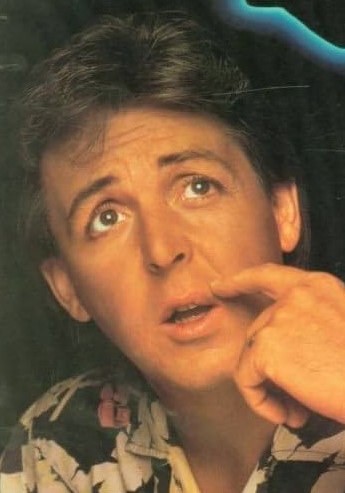 “Probably my favorite Beatles track,” Paul McCartney said of “You Know My Name (Look Up The Number) in a 1987 interview for Mark Lewisohn's book “The Beatles Recording Sessions.” Unfortunately, it can safely be said that most Beatles fans don't know of the song's existence, originally languishing on the b-side of the "Let It Be" single before eventually becoming the final track of their "Past Masters" sets. “Probably my favorite Beatles track,” Paul McCartney said of “You Know My Name (Look Up The Number) in a 1987 interview for Mark Lewisohn's book “The Beatles Recording Sessions.” Unfortunately, it can safely be said that most Beatles fans don't know of the song's existence, originally languishing on the b-side of the "Let It Be" single before eventually becoming the final track of their "Past Masters" sets.
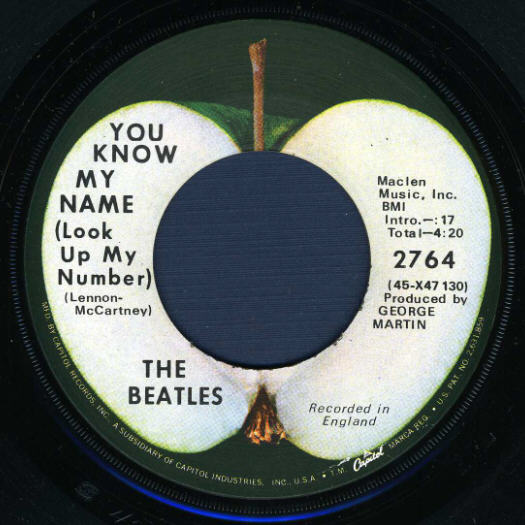 Many b-sides of their US singles charted independently, sometimes because of the ambiguity as to which side of their recent release was the most commercial of the two, other times because the b-side was just too good to pass up. Because of the obvious appeal of the song “Let It Be,” however, not many thought to turn the 45 over to see what was on the b-side. Personally, my brother and I did flip the record over once on the day that our parents bought it for us, but we only listened to the first twenty seconds or so until we heard the screamed lyrics “YOU KNOW MY NAME...,” at which point we immediately turned it back over to hear "Let It Be" once again, not bothering to give it another chance for many years. Many b-sides of their US singles charted independently, sometimes because of the ambiguity as to which side of their recent release was the most commercial of the two, other times because the b-side was just too good to pass up. Because of the obvious appeal of the song “Let It Be,” however, not many thought to turn the 45 over to see what was on the b-side. Personally, my brother and I did flip the record over once on the day that our parents bought it for us, but we only listened to the first twenty seconds or so until we heard the screamed lyrics “YOU KNOW MY NAME...,” at which point we immediately turned it back over to hear "Let It Be" once again, not bothering to give it another chance for many years.
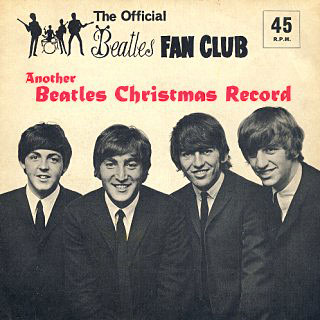 What we failed to realize at first was that, as we discovered upon later invenstigation, this track was a very humorous example of Beatles ingenuity that matched what was contained on many Beatles Christmas Records of previous years, something we were also oblivious to at the time. Upon the completion of the monumental “Sgt. Pepper” album of 1967, John Lennon proposed the recording of what arguably is the strangest Beatles track of all time, finally released as the breakup of The Beatles was officially being announced. What we failed to realize at first was that, as we discovered upon later invenstigation, this track was a very humorous example of Beatles ingenuity that matched what was contained on many Beatles Christmas Records of previous years, something we were also oblivious to at the time. Upon the completion of the monumental “Sgt. Pepper” album of 1967, John Lennon proposed the recording of what arguably is the strangest Beatles track of all time, finally released as the breakup of The Beatles was officially being announced.
Songwriting History
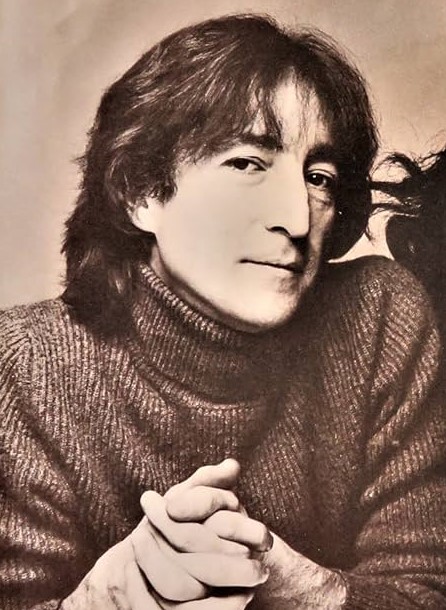 “That was a piece of unfinished music that I turned into a comedy record with Paul,” John stated in his 1980 Playboy interview. “I was waiting for him in his house...Paul was making a phone call and I saw the phone book was on the piano. He said something like, 'You know the name, look up the number.'...the phone book was on the piano with the words, 'You know my name, look up the number.' That was like a logo, and I just changed it. It was going to be like a Four Tops kind of song, the chord changes are like that, but it never developed and we made a joke of it.” The front page of a monthly 1967 London telephone directory, as shown above, contains the phase “* You have their NAME? Look up their NUMBER” in bold print at the bottom. “That was a piece of unfinished music that I turned into a comedy record with Paul,” John stated in his 1980 Playboy interview. “I was waiting for him in his house...Paul was making a phone call and I saw the phone book was on the piano. He said something like, 'You know the name, look up the number.'...the phone book was on the piano with the words, 'You know my name, look up the number.' That was like a logo, and I just changed it. It was going to be like a Four Tops kind of song, the chord changes are like that, but it never developed and we made a joke of it.” The front page of a monthly 1967 London telephone directory, as shown above, contains the phase “* You have their NAME? Look up their NUMBER” in bold print at the bottom.
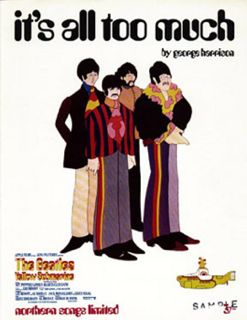 This visit by John at Paul's home in St. John's Wood, London, can be estimated to have occurred in early May of 1967, during the time they were putting the finishing touches on the soon-to-be-released “Sgt. Pepper” album. Knowing that these productive but tedious sessions had finally come to a close, and that they now needed to churn out some songs for the animated “Yellow Submarine” film that was then in the works, The Beatles were in a more lighthearted mood. They set out to produce some fun music to let off some steam in the recording studio, the results of their May 1967 sessions including “Baby, You're A Rich Man,” “All Together Now” and “It's All Too Much.” Upon listening to these tracks you can tell they were just having fun. This visit by John at Paul's home in St. John's Wood, London, can be estimated to have occurred in early May of 1967, during the time they were putting the finishing touches on the soon-to-be-released “Sgt. Pepper” album. Knowing that these productive but tedious sessions had finally come to a close, and that they now needed to churn out some songs for the animated “Yellow Submarine” film that was then in the works, The Beatles were in a more lighthearted mood. They set out to produce some fun music to let off some steam in the recording studio, the results of their May 1967 sessions including “Baby, You're A Rich Man,” “All Together Now” and “It's All Too Much.” Upon listening to these tracks you can tell they were just having fun.
 Paul recalled the events of May 17th, 1967, as the group entered EMI Studio Two for one particular recording session. “It's so insane, all the memories,” he told Mark Lewisohn in 1987. “I mean, what would you do if a guy like John Lennon turned up at the studio and said, 'I've got a new song.' I said, 'What's the words?' and he replied, 'You know my name look up the number.' I asked, 'What's the rest of it?' 'No, no other words, those are the words. And I wanna do it like a mantra!' We did it over a period of maybe two or three years...It was just so hilarious to put that record together. It's not a great melody or anything, it's just unique. Some people haven't discovered that song yet.” Paul recalled the events of May 17th, 1967, as the group entered EMI Studio Two for one particular recording session. “It's so insane, all the memories,” he told Mark Lewisohn in 1987. “I mean, what would you do if a guy like John Lennon turned up at the studio and said, 'I've got a new song.' I said, 'What's the words?' and he replied, 'You know my name look up the number.' I asked, 'What's the rest of it?' 'No, no other words, those are the words. And I wanna do it like a mantra!' We did it over a period of maybe two or three years...It was just so hilarious to put that record together. It's not a great melody or anything, it's just unique. Some people haven't discovered that song yet.”
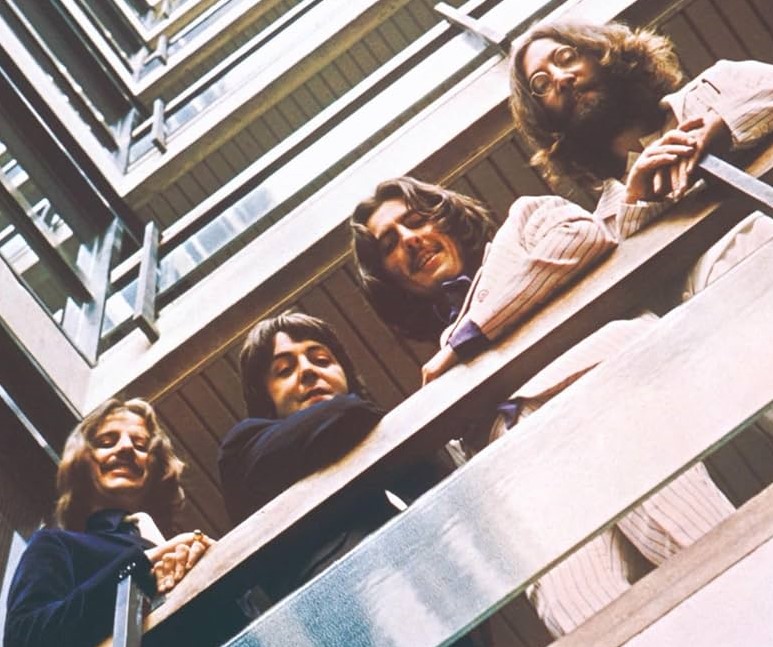 As Paul stated above, the song was touched on various times during the Beatles career, it being developed continuously until its final recording session on April 30th, 1969. Therefore it can be stated that “You Know My Name (Look Up The Number)” was composed by John and Paul in the studio as they were recording it with The Beatles, the time of writing stretching from May 17th, 1967 to April 30th, 1969. As Paul stated above, the song was touched on various times during the Beatles career, it being developed continuously until its final recording session on April 30th, 1969. Therefore it can be stated that “You Know My Name (Look Up The Number)” was composed by John and Paul in the studio as they were recording it with The Beatles, the time of writing stretching from May 17th, 1967 to April 30th, 1969.
Recording History
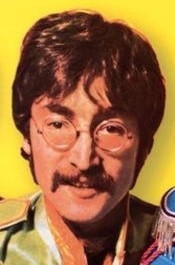 The account of John Lennon suggesting in the recording studio that they record a song with the only lyrics being “you know my name, look up the number,” as McCartney described above, apparently occurred on May 17th, 1967. The Beatles entered EMI Studio Two at around 7 pm and soon after began recording this new song idea. Producer George Martin, however, was not present on this day, Geoff Emerick and Richard Lush being employed as engineers for this session. The account of John Lennon suggesting in the recording studio that they record a song with the only lyrics being “you know my name, look up the number,” as McCartney described above, apparently occurred on May 17th, 1967. The Beatles entered EMI Studio Two at around 7 pm and soon after began recording this new song idea. Producer George Martin, however, was not present on this day, Geoff Emerick and Richard Lush being employed as engineers for this session.
 “In mid-May, George Martin took off for a two-week holiday in the south of France,” Geoff Emerick relates in his book “Here, There and Everywhere.” “The Beatles nonetheless soldiered on without him, and I was officially listed on the tape box as both producer and engineer of...an unusual collaboration between John and Paul called 'You Know My Name (Look Up The Number).' Frankly, George going on vacation in the middle of these sessions did not go down well in anybody's book. We were all tired (from the exhausing “Sgt. Pepper” sessions) yet he was the only one taking time off. By this point, I doubt very much if the band were crediting George Martin with their success anyway. In fact, they probably welcomed the opportunity to get some work done without him.” “In mid-May, George Martin took off for a two-week holiday in the south of France,” Geoff Emerick relates in his book “Here, There and Everywhere.” “The Beatles nonetheless soldiered on without him, and I was officially listed on the tape box as both producer and engineer of...an unusual collaboration between John and Paul called 'You Know My Name (Look Up The Number).' Frankly, George going on vacation in the middle of these sessions did not go down well in anybody's book. We were all tired (from the exhausing “Sgt. Pepper” sessions) yet he was the only one taking time off. By this point, I doubt very much if the band were crediting George Martin with their success anyway. In fact, they probably welcomed the opportunity to get some work done without him.”
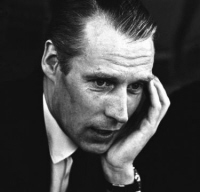 To help explain the atmosphere of this session, Geoff Emerick relates the usual environment with George Martin as their producer: “I had noticed that The Beatles would often try to get a take down quickly whenever George left the room. It was kind of an in-joke, and it was always done lightheartedly, but there was an underlying message: to show him in a subtle way that they didn't really need him. Of course, when George would return and listen back to what they'd done, he'd always waffle a bit, saying something along the lines of 'Well, that's interesting, but I think perhaps you need to do another take.' He'd always manage to find some fault with what they'd put down on tape, because it was an insult to his ego to think that they could make a good, solid recording without his input.” To help explain the atmosphere of this session, Geoff Emerick relates the usual environment with George Martin as their producer: “I had noticed that The Beatles would often try to get a take down quickly whenever George left the room. It was kind of an in-joke, and it was always done lightheartedly, but there was an underlying message: to show him in a subtle way that they didn't really need him. Of course, when George would return and listen back to what they'd done, he'd always waffle a bit, saying something along the lines of 'Well, that's interesting, but I think perhaps you need to do another take.' He'd always manage to find some fault with what they'd put down on tape, because it was an insult to his ego to think that they could make a good, solid recording without his input.”
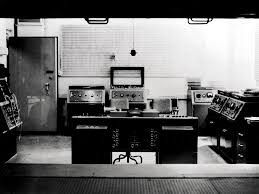 “But things were definitely more relaxed when George Martin wasn't around. There was always a certain protocol when he was at a session: we in the control room felt that we had to be on our best behaviours, and even The Beatles seemed slightly constrained by his presence at times. When he wasn't there, we'd all let our hair down and have a bit of fun. There was just a different dynamic, and you can hear it in (“You Know My Name”)...a lot looser, a lot more up, than anything they'd recorded in quite a while.” “But things were definitely more relaxed when George Martin wasn't around. There was always a certain protocol when he was at a session: we in the control room felt that we had to be on our best behaviours, and even The Beatles seemed slightly constrained by his presence at times. When he wasn't there, we'd all let our hair down and have a bit of fun. There was just a different dynamic, and you can hear it in (“You Know My Name”)...a lot looser, a lot more up, than anything they'd recorded in quite a while.”
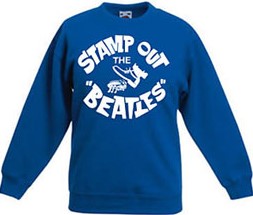 The final version of this song can be broken down into five different parts, each presenting the lyrics “you know my name, look up the number” as rendered in various different musical styles. However, on this first day, May 17th, 1967, all four members of The Beatles, with George wearing a "Stamp Out The Beatles" shirt, took to rehearsing and then officially recording 14 takes of the rhythm track for what eventually became the first part of the song. The final version of this song can be broken down into five different parts, each presenting the lyrics “you know my name, look up the number” as rendered in various different musical styles. However, on this first day, May 17th, 1967, all four members of The Beatles, with George wearing a "Stamp Out The Beatles" shirt, took to rehearsing and then officially recording 14 takes of the rhythm track for what eventually became the first part of the song.
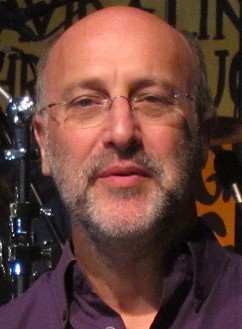 Author Mark Lewisohn, during the writing of his book “The Beatles Recording Sessions,” gained access to the actual session tape from this day and, after listening to the complete recording, wrote that "take 10," which was considered at the time to be the best take, consisted of “guitars, bass, hanbdclaps, bongos and a little vocals.” This take apparently consisted of both John and George on guitars, Paul on bass and Ringo on drums with guide vocals from John and Paul, as had been the custom during most of the recent “Sgt. Pepper” sessions. Bongos and handclaps had to have been overdubbed afterward, since this take was “marked down for being edited into the master at a later stage,” as Mark Lewisohn stipulates. Author Mark Lewisohn, during the writing of his book “The Beatles Recording Sessions,” gained access to the actual session tape from this day and, after listening to the complete recording, wrote that "take 10," which was considered at the time to be the best take, consisted of “guitars, bass, hanbdclaps, bongos and a little vocals.” This take apparently consisted of both John and George on guitars, Paul on bass and Ringo on drums with guide vocals from John and Paul, as had been the custom during most of the recent “Sgt. Pepper” sessions. Bongos and handclaps had to have been overdubbed afterward, since this take was “marked down for being edited into the master at a later stage,” as Mark Lewisohn stipulates.
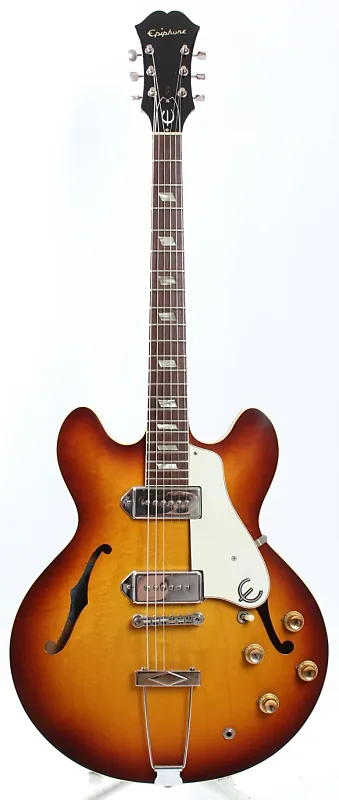 Since both released versions of the song (the single and the “Anthology 2” mix) begin with a recording of the group from this day with the instrumentation of piano, bass, guitar and drums, it would seem to indicate that The Beatles were experimenting with different instrumentations. As we'll see below, "take 10" was later replaced with "take nine" as the official version of the rhythm track for "Part 1." Photographic evidence from this day shows John on piano with both George and Paul playing Epiphone Casino electric guitars and Ringo on drums, Paul overdubbing bass afterward as had been the case during many “Sgt. Pepper” tracks recorded earlier that year. This appears to be the instrumentation used on "take nine" as heard on the released version of the song. By 2:30 am the following morning, all involved had left EMI Studios for the day. Since both released versions of the song (the single and the “Anthology 2” mix) begin with a recording of the group from this day with the instrumentation of piano, bass, guitar and drums, it would seem to indicate that The Beatles were experimenting with different instrumentations. As we'll see below, "take 10" was later replaced with "take nine" as the official version of the rhythm track for "Part 1." Photographic evidence from this day shows John on piano with both George and Paul playing Epiphone Casino electric guitars and Ringo on drums, Paul overdubbing bass afterward as had been the case during many “Sgt. Pepper” tracks recorded earlier that year. This appears to be the instrumentation used on "take nine" as heard on the released version of the song. By 2:30 am the following morning, all involved had left EMI Studios for the day.
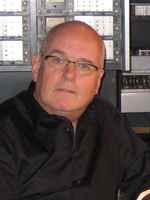 Three weeks later, on June 7th, 1967, The Beatles returned to EMI Studio Two to continue work on “You Know My Name (Look Up The Number).” George Martin, back from vacation, was present as producer on this day with Geoff Emerick and Richard Lush being delegated as engineers. “George Martin returned from his holiday when we were half done with it,” Geoff Emerick writes, “and he must have felt that the inmates had been running the asylum – but I guess he also figured, if you can't beat them, join them!” As indicated above, possibly with George Martin's input, the overlooked "take nine" with John on piano was deemed more suitable than "take 10" and would therefore be considered best from this point on. “Various bits and pieces,” as Mark Lewisohn describes in “The Beatles Recording Sessions,” were overdubbed onto "take nine," undoubtedly including handclaps on the snare beats as heard in the released versions of the song. Three weeks later, on June 7th, 1967, The Beatles returned to EMI Studio Two to continue work on “You Know My Name (Look Up The Number).” George Martin, back from vacation, was present as producer on this day with Geoff Emerick and Richard Lush being delegated as engineers. “George Martin returned from his holiday when we were half done with it,” Geoff Emerick writes, “and he must have felt that the inmates had been running the asylum – but I guess he also figured, if you can't beat them, join them!” As indicated above, possibly with George Martin's input, the overlooked "take nine" with John on piano was deemed more suitable than "take 10" and would therefore be considered best from this point on. “Various bits and pieces,” as Mark Lewisohn describes in “The Beatles Recording Sessions,” were overdubbed onto "take nine," undoubtedly including handclaps on the snare beats as heard in the released versions of the song.
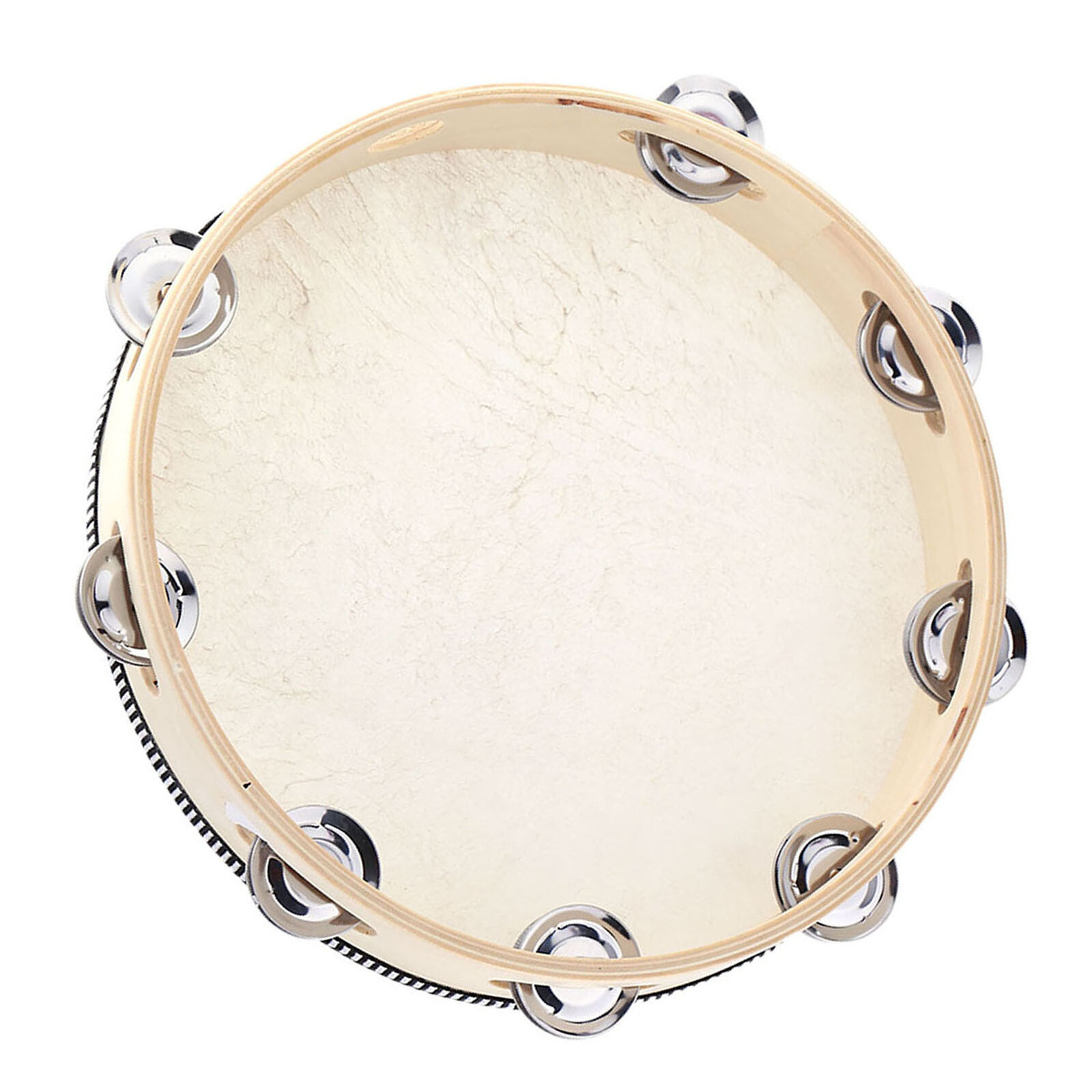 Other than these overdubs onto "take nine," it appears that the remainder of this recording session was unfruitful. In his 1987 interview with author Mark Lewisohn, Paul describes this session with these words: “We started off and we just did twenty minutes, 'you know my name, look up the number – you know my name, look up the number,' and we tried it again and it didn't work.” Upon listening to the master tape made on this day, Mark Lewisohn describes it as “almost 20 minutes of rhythm track recording, beginning with 'take 20' and consisting of an amateurish flute track (played, presumably, by a Beatle), electric guitar, drums, organ and tambourine. At one point Paul McCartney can be heard discussing the chord structure with George Harrison, suggesting the music was pre-planned. But when the playing starts that is the last impression one receives.” Other than these overdubs onto "take nine," it appears that the remainder of this recording session was unfruitful. In his 1987 interview with author Mark Lewisohn, Paul describes this session with these words: “We started off and we just did twenty minutes, 'you know my name, look up the number – you know my name, look up the number,' and we tried it again and it didn't work.” Upon listening to the master tape made on this day, Mark Lewisohn describes it as “almost 20 minutes of rhythm track recording, beginning with 'take 20' and consisting of an amateurish flute track (played, presumably, by a Beatle), electric guitar, drums, organ and tambourine. At one point Paul McCartney can be heard discussing the chord structure with George Harrison, suggesting the music was pre-planned. But when the playing starts that is the last impression one receives.”
 An interesting footnote regarding what transpired during this session and the following couple of days is that the “Sgt. Pepper” album, their laborious but groundbreaking acheivement of the past six months, had finally been released to almost unanimous acclaim. In his book “Here, There and Everywhere,” engineer Geoff Emerick relates: “For weeks afterward, it seemed that there was a new glowing review published almost daily, and George (Martin), Richard (Lush) and I read each one excitedly, taking great pride in all the hard work and effort we had put into the album. The Beatles themselves were quite pleased as well; it was a frequent topic of conversation in the studio, and they were highly amused at some of the more academically oriented reviews that praised them for a musical sophistication that they themselves were largely unaware of. Lennon in particular took great delight in reading some of those reviews out loud in his finest toff-nosed upper-class voice, often ending the recital with a decidedly Souse 'What the fook is that twat on about?'” An interesting footnote regarding what transpired during this session and the following couple of days is that the “Sgt. Pepper” album, their laborious but groundbreaking acheivement of the past six months, had finally been released to almost unanimous acclaim. In his book “Here, There and Everywhere,” engineer Geoff Emerick relates: “For weeks afterward, it seemed that there was a new glowing review published almost daily, and George (Martin), Richard (Lush) and I read each one excitedly, taking great pride in all the hard work and effort we had put into the album. The Beatles themselves were quite pleased as well; it was a frequent topic of conversation in the studio, and they were highly amused at some of the more academically oriented reviews that praised them for a musical sophistication that they themselves were largely unaware of. Lennon in particular took great delight in reading some of those reviews out loud in his finest toff-nosed upper-class voice, often ending the recital with a decidedly Souse 'What the fook is that twat on about?'”
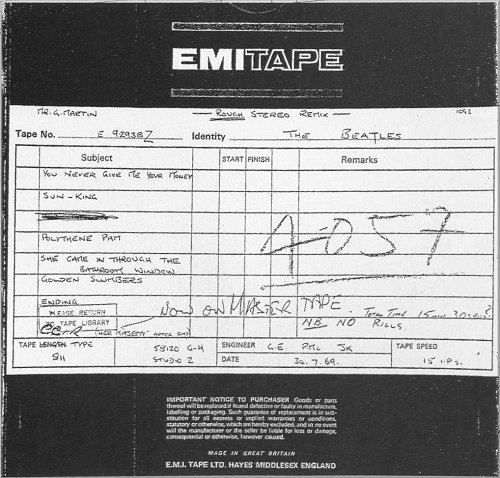 Regarding the accomplishments of this day, five takes of an experimental addition to “You Know My Name (Look Up The Number)” were recorded, these being so discordant and far removed from the task at hand that they were labeled “Instrumental – Unidentified” on the tape box. By 2 am the following morning, the session was over, The Beatles leaving the studio to rethink what to do next in order to develop the song further. Regarding the accomplishments of this day, five takes of an experimental addition to “You Know My Name (Look Up The Number)” were recorded, these being so discordant and far removed from the task at hand that they were labeled “Instrumental – Unidentified” on the tape box. By 2 am the following morning, the session was over, The Beatles leaving the studio to rethink what to do next in order to develop the song further.
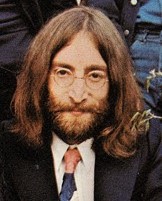 The following day's session on June 8th, 1967, was extremely productive in comparison to the previous one. The Beatles entered EMI Studio Two again at around 7 pm along with George Martin, Geoff Emerick and Richard Lush to lay down rhythm tracks for what became all four of the remaining parts of “You Know My Name (Look Up The Number).” All four of the remaining sections continued the chord progression and key of the first previously recorded section, but with very different approaches. “We did these mad backings,” John related in 1969 about the as-yet unreleased track, Paul explaining in 1987, “We tried it again, and we had these endless, crazy fun sessions." Geoff Emerick states regarding this evening's session: “One night The Beatles had their friends come by to add party ambience, and to my surprise a rather sheepish-looking George (Martin) marched straight down into the studio and contributed to the handclaps and crowd noise.” The following day's session on June 8th, 1967, was extremely productive in comparison to the previous one. The Beatles entered EMI Studio Two again at around 7 pm along with George Martin, Geoff Emerick and Richard Lush to lay down rhythm tracks for what became all four of the remaining parts of “You Know My Name (Look Up The Number).” All four of the remaining sections continued the chord progression and key of the first previously recorded section, but with very different approaches. “We did these mad backings,” John related in 1969 about the as-yet unreleased track, Paul explaining in 1987, “We tried it again, and we had these endless, crazy fun sessions." Geoff Emerick states regarding this evening's session: “One night The Beatles had their friends come by to add party ambience, and to my surprise a rather sheepish-looking George (Martin) marched straight down into the studio and contributed to the handclaps and crowd noise.”
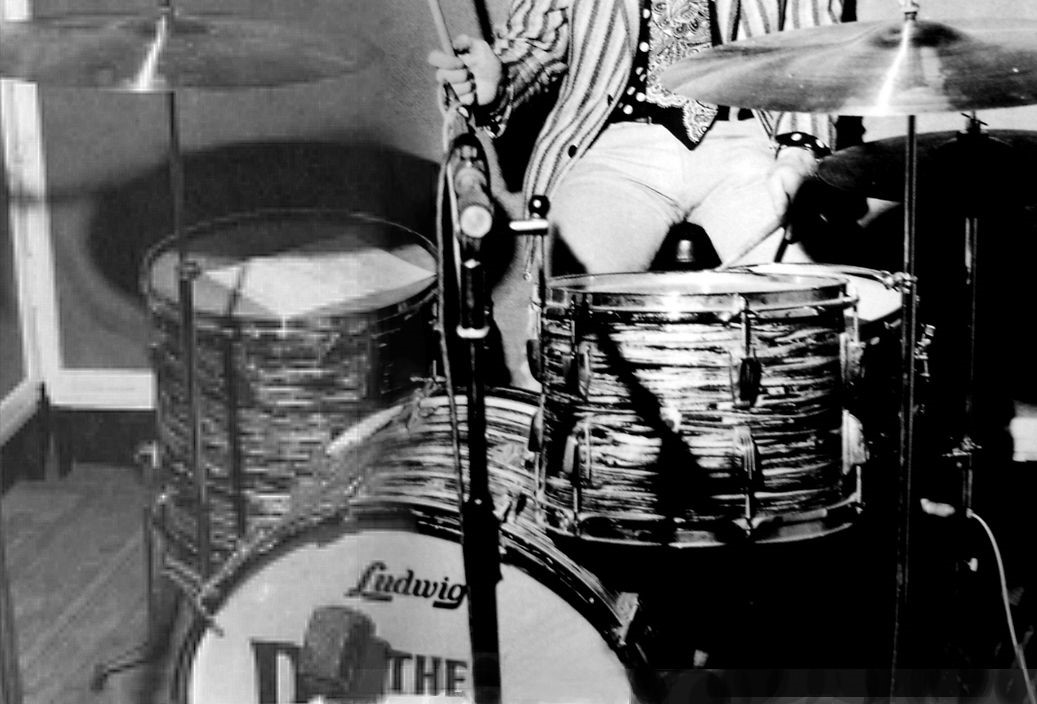 The first thing tackled on this day was “Part 2” of the song, twelve takes being recorded of a ska influenced rendition of the song's progression. "Take 12" was deemed the best, this consisting of the song's pattern repeated three times with a brief outro tacked onto the end, the instrumentation appearing to be Paul on piano, John and George on guitar and Ringo on drums. As with the previously recorded "Part 1," this section was recorded without vocals at this point, these to be overdubbed later. The first thing tackled on this day was “Part 2” of the song, twelve takes being recorded of a ska influenced rendition of the song's progression. "Take 12" was deemed the best, this consisting of the song's pattern repeated three times with a brief outro tacked onto the end, the instrumentation appearing to be Paul on piano, John and George on guitar and Ringo on drums. As with the previously recorded "Part 1," this section was recorded without vocals at this point, these to be overdubbed later.
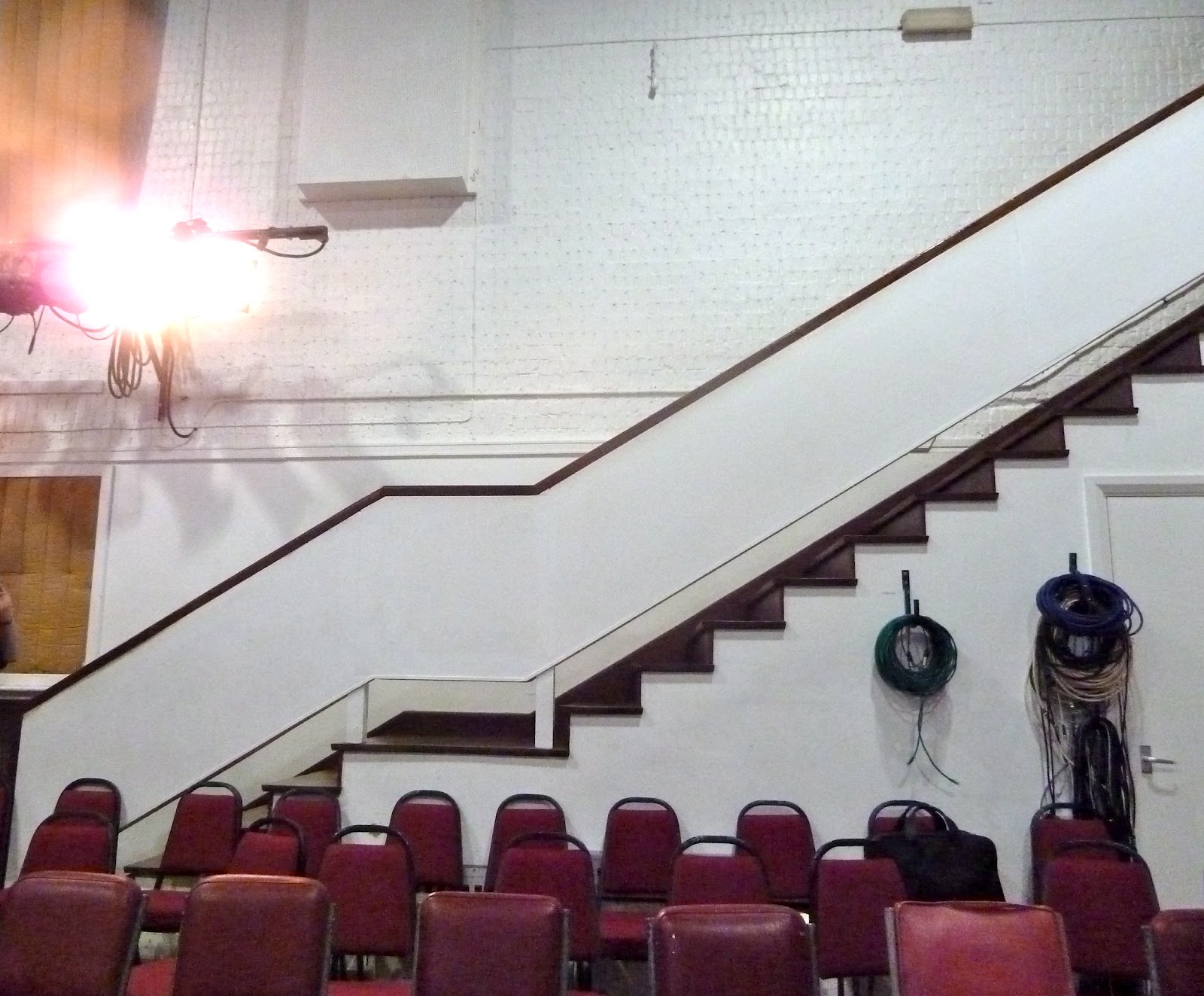 “Part 3” came next, which was described by Geoff Emerick as being played in a “lounge lizard style.” The sound effects cupboard under the stairs leading up to the control room was raided for this section, bongos, maracas and skulls appearently being utilized by The Beatles and their guests. While no vocals were committed to tape at this point, Paul is to the fore on piano during this section as is Ringo on bongos. Four takes of this section were recorded, "take four" determined as being the best. As in “Part 2,” “Part 3” consists of the song's pattern run through three times and then rounded off with a brief outro before it disolves. “Part 3” came next, which was described by Geoff Emerick as being played in a “lounge lizard style.” The sound effects cupboard under the stairs leading up to the control room was raided for this section, bongos, maracas and skulls appearently being utilized by The Beatles and their guests. While no vocals were committed to tape at this point, Paul is to the fore on piano during this section as is Ringo on bongos. Four takes of this section were recorded, "take four" determined as being the best. As in “Part 2,” “Part 3” consists of the song's pattern run through three times and then rounded off with a brief outro before it disolves.
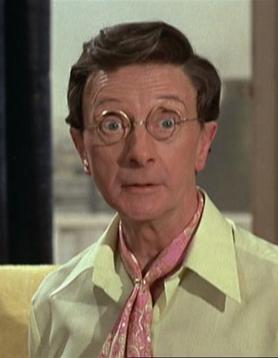 The Beatles then moved on to what became “Part 4,” which could only be described as quirky and silly in imitation of something conjured up by “The Goons,” a favorite comedy troupe of theirs. Paul leads the way on this twice repeated instrumental runthrough of the song's pattern on piano, six takes of which were put to tape on this day, the sixth being the best. Mark Lewisohn describes this section in “The Beatles Recording Sessions” as “a most peculiar recording, with sound effects and noises which would not have been out of place in a 'Carry On' film soundtrack.” The British “Carry On” series of films and television shows were very popular at the time, their current film at that moment entitled “Don't Lose Your Head” featuring actor Charles Hawtrey (as in Lennon's statement “Charles Hawtrey and The Deaf-Aids” that opens the “Let It Be” soundtrack album). Also heard prominently on the recording is Ringo on bongos and both a bird whistle and harmonica played by those who were present in the crowd that day. The Beatles then moved on to what became “Part 4,” which could only be described as quirky and silly in imitation of something conjured up by “The Goons,” a favorite comedy troupe of theirs. Paul leads the way on this twice repeated instrumental runthrough of the song's pattern on piano, six takes of which were put to tape on this day, the sixth being the best. Mark Lewisohn describes this section in “The Beatles Recording Sessions” as “a most peculiar recording, with sound effects and noises which would not have been out of place in a 'Carry On' film soundtrack.” The British “Carry On” series of films and television shows were very popular at the time, their current film at that moment entitled “Don't Lose Your Head” featuring actor Charles Hawtrey (as in Lennon's statement “Charles Hawtrey and The Deaf-Aids” that opens the “Let It Be” soundtrack album). Also heard prominently on the recording is Ringo on bongos and both a bird whistle and harmonica played by those who were present in the crowd that day.
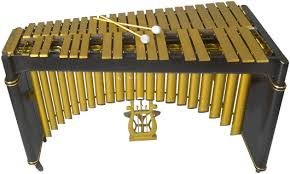 Then came “Part 5,” which only needed a single take to perfect. Once again, Paul is on piano with Ringo on drums and, presumably, John on bass and George on vibraphone which appears toward the conclusion of the song. This section is agreeably described by musicologist Alan Pollock as “a cool jazzy backing track” with “a swinging ride beat,” the appearance of the vibraphone and a saxophone in the final measures confirming the group's intention...“the greatest tea-room orchestra in the world,” as David Frost labeled them during their “Hey Jude” promo film shoot. Then came “Part 5,” which only needed a single take to perfect. Once again, Paul is on piano with Ringo on drums and, presumably, John on bass and George on vibraphone which appears toward the conclusion of the song. This section is agreeably described by musicologist Alan Pollock as “a cool jazzy backing track” with “a swinging ride beat,” the appearance of the vibraphone and a saxophone in the final measures confirming the group's intention...“the greatest tea-room orchestra in the world,” as David Frost labeled them during their “Hey Jude” promo film shoot.
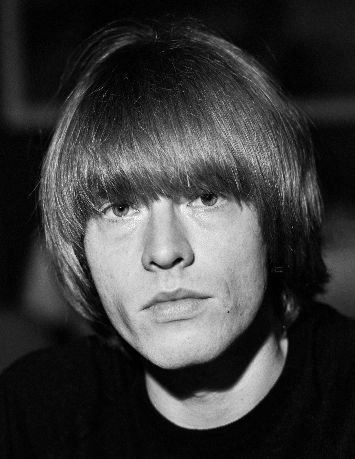 But who was this mysterious saxophonist? “Brian Jones is playing sax on it, I believe,” Lennon stated during his 1980 Playboy interview. When Mark Lewisohn asked Paul if it was Brian Jones of The Rolling Stones or of The Undertakers playing saxophone on the song, Paul replied, “It was Brian Jones of The Stones. He turned up very, very nervous with a sax, and we said, 'Oh, we thought you'd bring a guitar!' and he'd brought a sax. I invited him to the session. Absolutely definitely Brian of The Stones...Unequivocably, as they say.” But who was this mysterious saxophonist? “Brian Jones is playing sax on it, I believe,” Lennon stated during his 1980 Playboy interview. When Mark Lewisohn asked Paul if it was Brian Jones of The Rolling Stones or of The Undertakers playing saxophone on the song, Paul replied, “It was Brian Jones of The Stones. He turned up very, very nervous with a sax, and we said, 'Oh, we thought you'd bring a guitar!' and he'd brought a sax. I invited him to the session. Absolutely definitely Brian of The Stones...Unequivocably, as they say.”
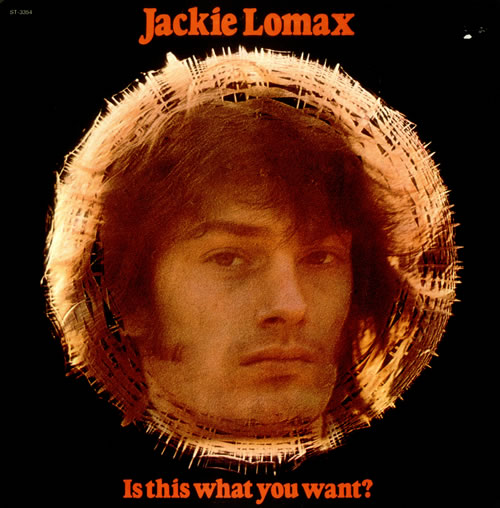 The confusion as to which Brian Jones actually played on “You Know My Name (Look Up The Number)” is understandable. The Undertakers were a Liverpool group that included a musician named Brian Jones who played tenor saxophone. This group also featured lead vocalist and bassist Jackie Lomax whom George Harrison signed to Apple Records the following year. His recording of George's song “Sour Milk Sea” also became a primary inspiration for Paul's composition “Get Back,” all of this indicating that The Undertakers were associates of The Beatles throughout most of their career. The confusion as to which Brian Jones actually played on “You Know My Name (Look Up The Number)” is understandable. The Undertakers were a Liverpool group that included a musician named Brian Jones who played tenor saxophone. This group also featured lead vocalist and bassist Jackie Lomax whom George Harrison signed to Apple Records the following year. His recording of George's song “Sour Milk Sea” also became a primary inspiration for Paul's composition “Get Back,” all of this indicating that The Undertakers were associates of The Beatles throughout most of their career.
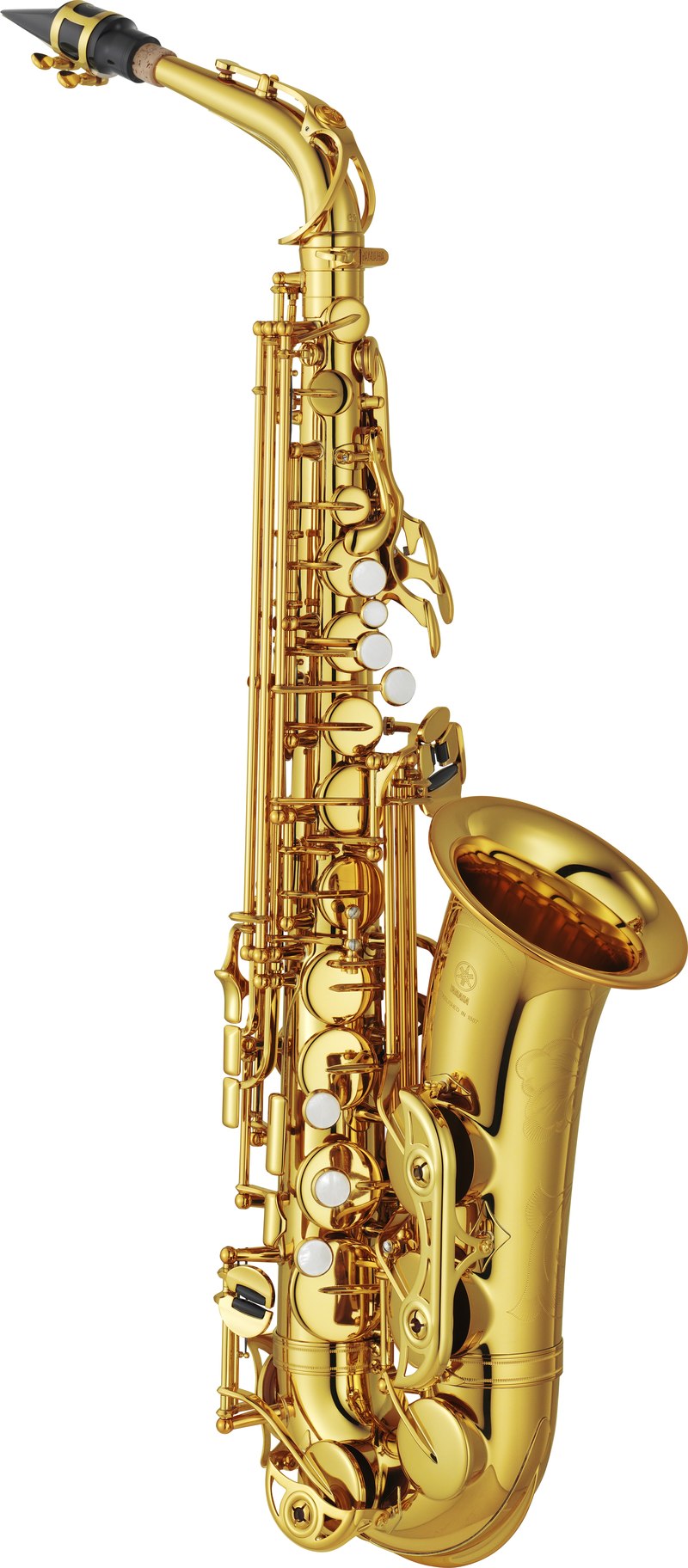 Regarding Brian Jones of The Rolling Stones being present in the studio on this day, Geoff Emerick confirms that he was “one of the guests. He had been asked to play some guitar on the track, but he turned up with a saxophone instead. It was an instrument I didn't know he could play – in fact, I'm not so sure even he realized he could play it! But such was the spirit of the times that Paul and John's reaction was, 'Okay, well, let him blow the sax, then,' which he did...though not very skillfully. Brian was a quiet bloke – nothing like the other Stones I had met – but he was also extremely out of it that night, so stoned that he didn't even seem to be sure of where he was.” Regarding Brian Jones of The Rolling Stones being present in the studio on this day, Geoff Emerick confirms that he was “one of the guests. He had been asked to play some guitar on the track, but he turned up with a saxophone instead. It was an instrument I didn't know he could play – in fact, I'm not so sure even he realized he could play it! But such was the spirit of the times that Paul and John's reaction was, 'Okay, well, let him blow the sax, then,' which he did...though not very skillfully. Brian was a quiet bloke – nothing like the other Stones I had met – but he was also extremely out of it that night, so stoned that he didn't even seem to be sure of where he was.”
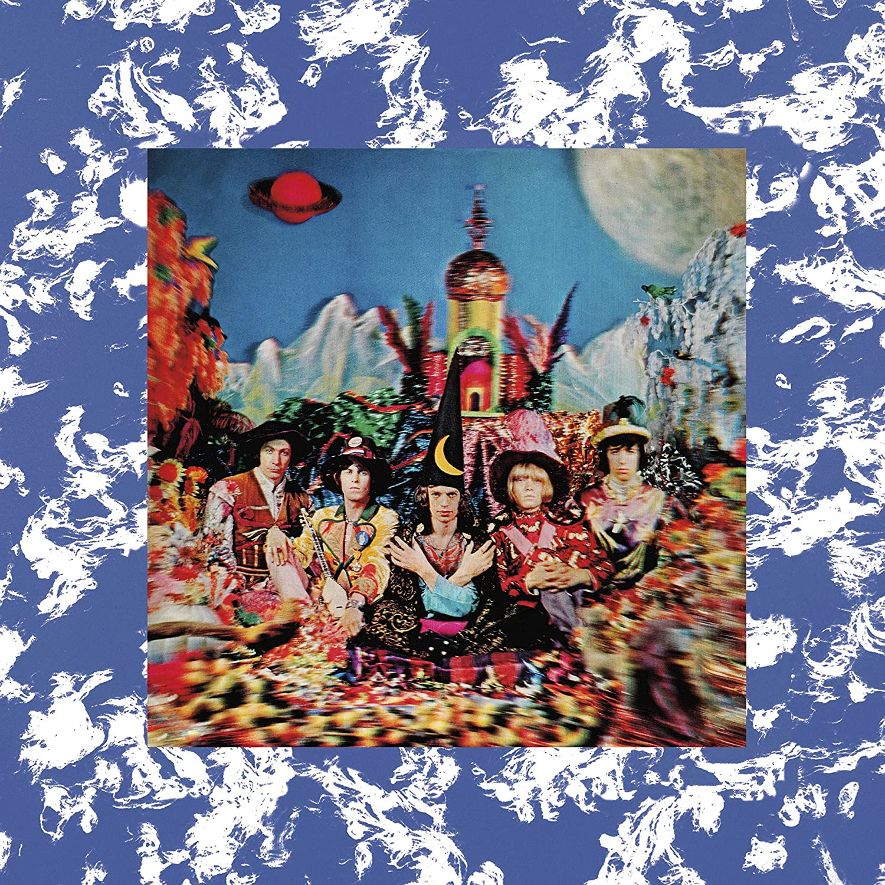 At that point in the career of The Rolling Stones, Brian Jones had become somewhat withdrawn (with his drug habit possibly being a contributing factor) and was shying away from playing any guitar on his group's recordings. Their most recent album, the January 1967 released “Between The Buttons,” found him playing almost anything else but guitar, including organ, vibraphone, tuba, trumpet, trombone and even kazoo! The next three Rolling Stones albums also show him only minimally playing guitar, instead experimenting with flute, mellotron and other instruments. Their December 1967 release “Their Satanic Majesties Request” includes him playing saxophone on three tracks, so when he showed up for a Beatles session on June 8th, 1967 with a saxophone instead of a guitar, it wasn't too unusual. At that point in the career of The Rolling Stones, Brian Jones had become somewhat withdrawn (with his drug habit possibly being a contributing factor) and was shying away from playing any guitar on his group's recordings. Their most recent album, the January 1967 released “Between The Buttons,” found him playing almost anything else but guitar, including organ, vibraphone, tuba, trumpet, trombone and even kazoo! The next three Rolling Stones albums also show him only minimally playing guitar, instead experimenting with flute, mellotron and other instruments. Their December 1967 release “Their Satanic Majesties Request” includes him playing saxophone on three tracks, so when he showed up for a Beatles session on June 8th, 1967 with a saxophone instead of a guitar, it wasn't too unusual.
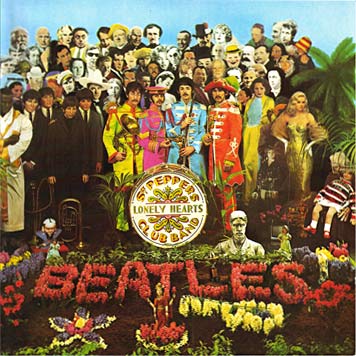 “It was time to let off some steam,” Geoff Emerick explained. “The prevalent feeling in the group seemed to be: 'after all those years of hard work, now it's time to play.' For all the fun we were having in the studio, there's no question that The Beatles really were quite unfocused at this point. Richard (Lush) and I were having a great time doing these sessions, but George Martin was starting to complain a bit about the band's lack of productivity. Personally, I saw it as just a bit of harmless light relief after all the intensity that had gone into 'Pepper.'” “It was time to let off some steam,” Geoff Emerick explained. “The prevalent feeling in the group seemed to be: 'after all those years of hard work, now it's time to play.' For all the fun we were having in the studio, there's no question that The Beatles really were quite unfocused at this point. Richard (Lush) and I were having a great time doing these sessions, but George Martin was starting to complain a bit about the band's lack of productivity. Personally, I saw it as just a bit of harmless light relief after all the intensity that had gone into 'Pepper.'”
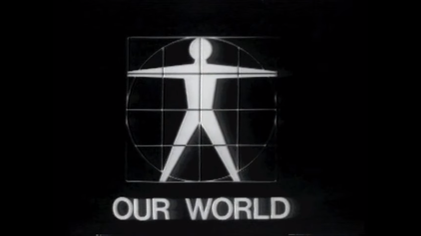 Amid all this fun, however, it appears that it was on this day that Paul remembered a serious commitment that manager Brian Epstein had arranged for them to fulfill. During the “Sgt. Pepper” sessions, Brian Epstein arranged for The Beatles to supply the British segment of a Live Via Satellite show entitled “Our World,” which would be broadcast all over the world. A new song needed to be written for them to be shown recording live in the studio on a given day, John Lennon agreeing to write a new song for the occasion. Amid all this fun, however, it appears that it was on this day that Paul remembered a serious commitment that manager Brian Epstein had arranged for them to fulfill. During the “Sgt. Pepper” sessions, Brian Epstein arranged for The Beatles to supply the British segment of a Live Via Satellite show entitled “Our World,” which would be broadcast all over the world. A new song needed to be written for them to be shown recording live in the studio on a given day, John Lennon agreeing to write a new song for the occasion.
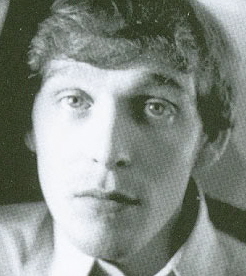 Geoff Emerick remembers, “The issue was forgotten...until some weeks later, during one of the 'You Know My Name' sessions, Paul happened to ask John casually, 'How are you getting on with that song for the television broadcast? Isn't it coming up fairly soon?' John looked questioningly at Neil (Aspinall), who was the keeper of the band's diary. 'Couple of weeks' time, looks like,' Neil responded after consulting his tattered book. 'Oh God, is it that close? Well, then, I suppose I'd better write something.' The 'something' that John Lennon came up with – written to order, literally in a matter of days – was the song 'All You Need Is Love.'” Geoff Emerick remembers, “The issue was forgotten...until some weeks later, during one of the 'You Know My Name' sessions, Paul happened to ask John casually, 'How are you getting on with that song for the television broadcast? Isn't it coming up fairly soon?' John looked questioningly at Neil (Aspinall), who was the keeper of the band's diary. 'Couple of weeks' time, looks like,' Neil responded after consulting his tattered book. 'Oh God, is it that close? Well, then, I suppose I'd better write something.' The 'something' that John Lennon came up with – written to order, literally in a matter of days – was the song 'All You Need Is Love.'”
 From that point on, aside from an editing session for “You Know My Name (Look Up The Number)” the following day, all Beatle efforts went toward writing and recording their entry for the live broadcast that was set for June 25th, 1967, a mere two-and-a-half weeks later. The productive recording session for "You Know My Name (Look Up The Number)" on this day, however, concluded at 1 am the following morning. From that point on, aside from an editing session for “You Know My Name (Look Up The Number)” the following day, all Beatle efforts went toward writing and recording their entry for the live broadcast that was set for June 25th, 1967, a mere two-and-a-half weeks later. The productive recording session for "You Know My Name (Look Up The Number)" on this day, however, concluded at 1 am the following morning.
The above mentioned editing session occurred on June 9th, 1967, the only purpose of this session being to edit together the five instrumental segments that were to make up “You Know My Name (Look Up The Number).” The Beatles met with George Martin, Geoff Emerick and Richard Lush in the control room of EMI Studio Two at 7 pm to edit these five performances together adequately, which was a precursor to a similar editing job they would perform two years later for the “Abbey Road” medley for side two of that album.
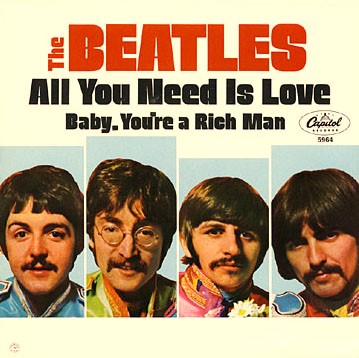 Calling this new edit “take 30,” it consisted of “take nine” of “Part 1,” “take 12” of “Part Two, “take four” of “Part 3,” “take six” of “Part 4,” and “take one” of “Part 5.” When this was done to everyone's satisfaction, the combined mix totaling 6:08, a mono mix was made for acetate cutting purposes. John and Paul knew that they would need to add their vocals at a future session but, since they realized that writing and preparing to record “All You Need Is Love” for the June 25th live broadcast deadline was the most pressing issue right then, they adjusted their efforts accordingly. Calling this new edit “take 30,” it consisted of “take nine” of “Part 1,” “take 12” of “Part Two, “take four” of “Part 3,” “take six” of “Part 4,” and “take one” of “Part 5.” When this was done to everyone's satisfaction, the combined mix totaling 6:08, a mono mix was made for acetate cutting purposes. John and Paul knew that they would need to add their vocals at a future session but, since they realized that writing and preparing to record “All You Need Is Love” for the June 25th live broadcast deadline was the most pressing issue right then, they adjusted their efforts accordingly.
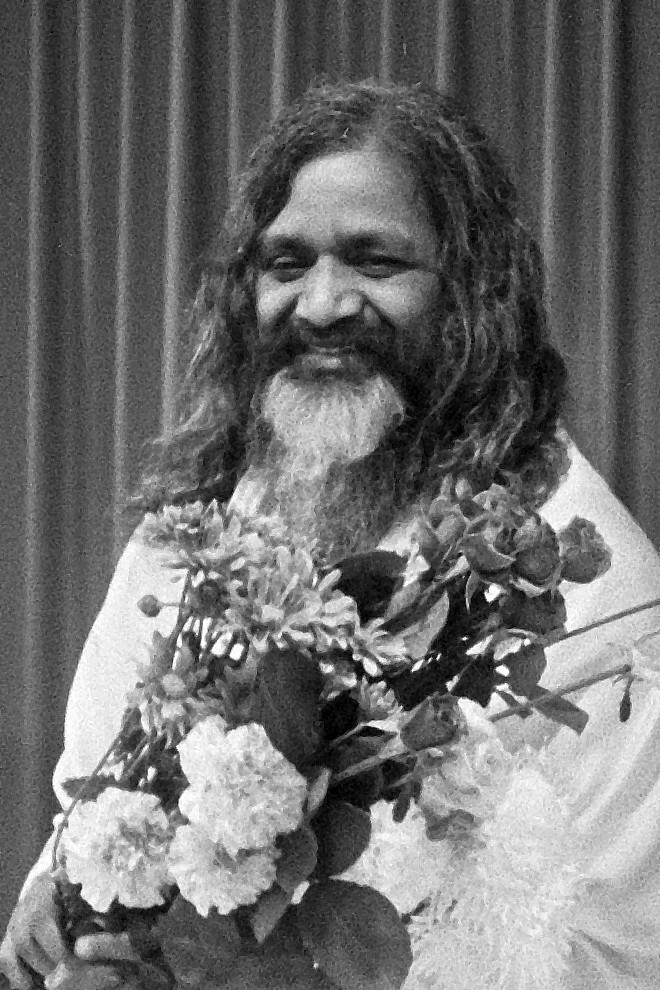 As it turned out, after “All You Need Is Love” was complete, they took a month-long break from the recording studio. When they did begin recording again on August 22nd, their new “Magical Mystery Tour” project was their primary concern. On August 24th, The Beatles met the Maharishi Mahesh Yogi whom they became infatuated with, travelling the next day to Bangor, North Wales, to study Transcendental Meditation with him. While there, their manager Brian Epstein passed away, leaving them with the realization that they were now in charge of directing their own affairs. With all of these serious events taking place, the frivolous nature of their “You Know My Name (Look Up The Number)” project seemed inappropriate. Therefore, as it turned out, it was put on the shelf for nearly two years. As it turned out, after “All You Need Is Love” was complete, they took a month-long break from the recording studio. When they did begin recording again on August 22nd, their new “Magical Mystery Tour” project was their primary concern. On August 24th, The Beatles met the Maharishi Mahesh Yogi whom they became infatuated with, travelling the next day to Bangor, North Wales, to study Transcendental Meditation with him. While there, their manager Brian Epstein passed away, leaving them with the realization that they were now in charge of directing their own affairs. With all of these serious events taking place, the frivolous nature of their “You Know My Name (Look Up The Number)” project seemed inappropriate. Therefore, as it turned out, it was put on the shelf for nearly two years.
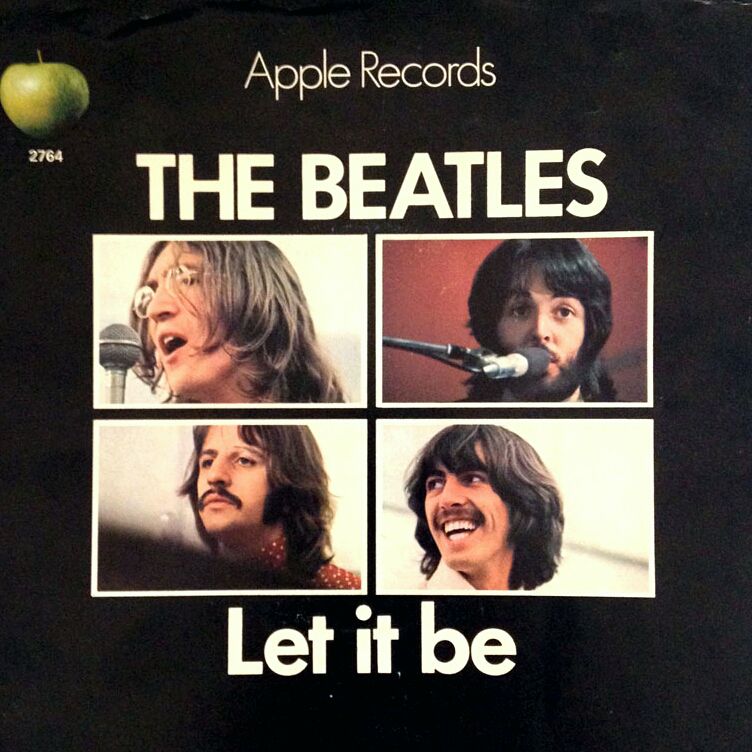 “There was another song I wrote around 'Pepper' time that's still in the can, called 'You Know My Name (Look Up The Number),'” John stated in an early 1969 interview. “That's the only words to it. It just goes on all the way like that, and we did these mad backings. But I never finished it, and I must.” Geoff Emerick recalls, “It sat on the shelf for nearly two and a half years (sic) before it was finally finished at Lennon's instigation.” Lennon's determination resulted in him and Paul finally adding their vocals to the song, as well as some sound effects, during an April 30th, 1969 recording session at EMI Studio Three, the primary purpose of this session being for George to overdub a new guitar solo onto the song “Let It Be.” “There was another song I wrote around 'Pepper' time that's still in the can, called 'You Know My Name (Look Up The Number),'” John stated in an early 1969 interview. “That's the only words to it. It just goes on all the way like that, and we did these mad backings. But I never finished it, and I must.” Geoff Emerick recalls, “It sat on the shelf for nearly two and a half years (sic) before it was finally finished at Lennon's instigation.” Lennon's determination resulted in him and Paul finally adding their vocals to the song, as well as some sound effects, during an April 30th, 1969 recording session at EMI Studio Three, the primary purpose of this session being for George to overdub a new guitar solo onto the song “Let It Be.”
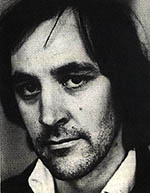 They entered the studio at 7:15 pm and, after George's guitar solo was perfected, John and Paul proceeded to add their vocals to “You Know My Name (Look Up The Number).” Chris Thomas was producer on this day, with Jeff Jarratt and Nick Webb as engineers, so with the above-mentioned intimidating presence of George Martin out of the way, John and Paul could create any silliness that popped into their heads at the time. “John and Paul weren't always getting on that well at this time,” recalls 2nd engineer Nick Webb, their managerial disagreements in particular taking a toll on their friendship. “But for that song they went onto the studio floor and sang together around one microphone. Even at that time I was thinking, 'What are they doing with this old four-track tape, recording these funny bits onto this quaint song?' But it was a fun track to do.” They entered the studio at 7:15 pm and, after George's guitar solo was perfected, John and Paul proceeded to add their vocals to “You Know My Name (Look Up The Number).” Chris Thomas was producer on this day, with Jeff Jarratt and Nick Webb as engineers, so with the above-mentioned intimidating presence of George Martin out of the way, John and Paul could create any silliness that popped into their heads at the time. “John and Paul weren't always getting on that well at this time,” recalls 2nd engineer Nick Webb, their managerial disagreements in particular taking a toll on their friendship. “But for that song they went onto the studio floor and sang together around one microphone. Even at that time I was thinking, 'What are they doing with this old four-track tape, recording these funny bits onto this quaint song?' But it was a fun track to do.”
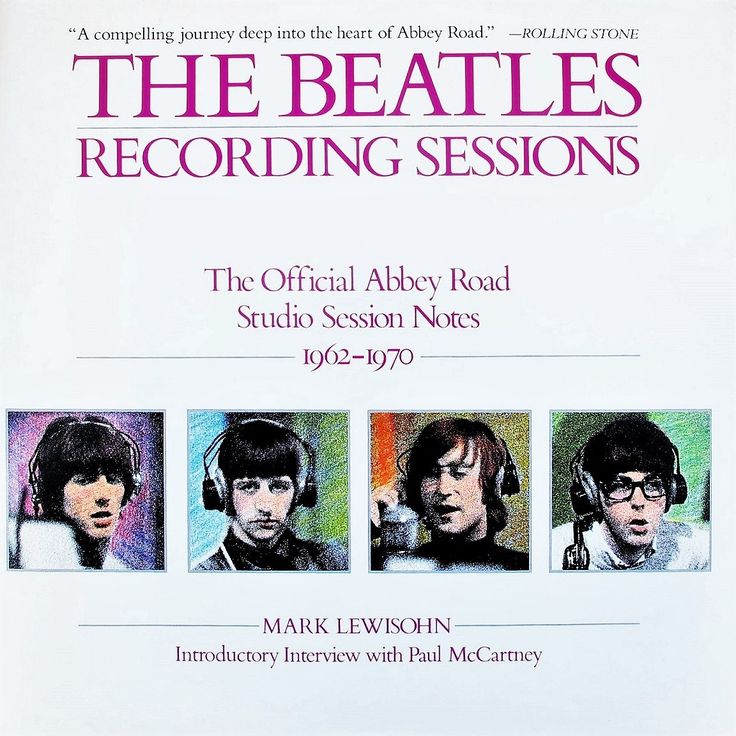 Geoff Emerick continues: “John and Paul dubbed on all manner of loony sound effects and sang and harrumphed in their full repertoire of comic Goon-like voices.” As the full 6:08 long mono mix of the five edited segments of the song played through their headphones, the two Beatles vocalized accordingly to whichever segment was playing at the time, also adding in lounge applause and voices during “Part 3” to give the recording the appropriate atmosphere. “Eventually we pulled it all together,” Paul explained in 1987, “and I sang (sings in jazzy style) 'you know my name...' and we just did a skit, Mal and his gravel. I can still see Mal digging the gravel. And it was just so hilarious to put the record together.” What Paul here recalled is what Mark Lewisohn describes in “The Beatles Recording Sessions” as “Mal Evans running a spade through a heap of gravel,” this being heard in “Part 4” of the recording. Geoff Emerick continues: “John and Paul dubbed on all manner of loony sound effects and sang and harrumphed in their full repertoire of comic Goon-like voices.” As the full 6:08 long mono mix of the five edited segments of the song played through their headphones, the two Beatles vocalized accordingly to whichever segment was playing at the time, also adding in lounge applause and voices during “Part 3” to give the recording the appropriate atmosphere. “Eventually we pulled it all together,” Paul explained in 1987, “and I sang (sings in jazzy style) 'you know my name...' and we just did a skit, Mal and his gravel. I can still see Mal digging the gravel. And it was just so hilarious to put the record together.” What Paul here recalled is what Mark Lewisohn describes in “The Beatles Recording Sessions” as “Mal Evans running a spade through a heap of gravel,” this being heard in “Part 4” of the recording.
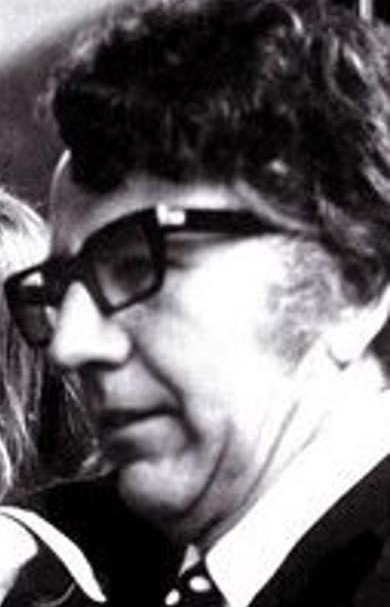 “Part 3” features Lennon taking on the role of “master of ceremonies,” addressing the fictional crowd with the words, “Good evening and welcome to Slaggers, featuring Denis O'Bell.” Paul then takes on the persona of Denis O'Bell and begins singing “you know my name...” as the imaginary patrons politely applaud and John continues giving encouraging remarks from the wings. The singer's name was an obvious take on Denis O'Dell who produced the “Magical Mystery Tour” film and had become director of Apple Films and Apple Publicity. “Part 3” features Lennon taking on the role of “master of ceremonies,” addressing the fictional crowd with the words, “Good evening and welcome to Slaggers, featuring Denis O'Bell.” Paul then takes on the persona of Denis O'Bell and begins singing “you know my name...” as the imaginary patrons politely applaud and John continues giving encouraging remarks from the wings. The singer's name was an obvious take on Denis O'Dell who produced the “Magical Mystery Tour” film and had become director of Apple Films and Apple Publicity.
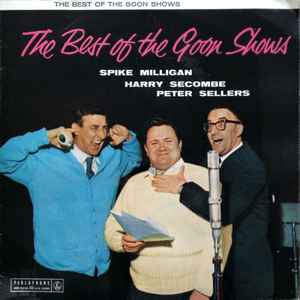 Mark Lewisohn describes their overdubs as “John and Paul handclapping, coughing, sputtering and slipping in the odd vocal reminiscent of Bluebottle in 'The Goon Show,'” this impersonation being heard in “Part 4.” “Part 5” primarily features Lennon's indecipherable British statesman's voice, described by musicologist Alan Pollack as sounding like “White Fang” from the American Soupy Sales TV show. After three mono mixes were made of this tomfoolery, the third being deemed the best, the song was once again delegated to the archives for future release. Mark Lewisohn describes their overdubs as “John and Paul handclapping, coughing, sputtering and slipping in the odd vocal reminiscent of Bluebottle in 'The Goon Show,'” this impersonation being heard in “Part 4.” “Part 5” primarily features Lennon's indecipherable British statesman's voice, described by musicologist Alan Pollack as sounding like “White Fang” from the American Soupy Sales TV show. After three mono mixes were made of this tomfoolery, the third being deemed the best, the song was once again delegated to the archives for future release.
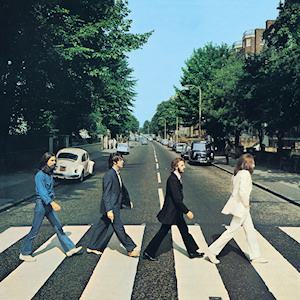 The primary focus in The Beatles camp at that time was two-fold: the preparation and release of their previously recorded “Get Back” album scheduled for sometime in June, hence the need for George to re-record his guitar solo on “Let It Be” on that day; and the recording of newly written songs which would eventually be included on “Abbey Road.” “You Know My Name (Look Up The Number),” however fun it was to record, didn't appear to fit into either of these projects so this 6:08 mono mix languished in the EMI tape library for the time being. The primary focus in The Beatles camp at that time was two-fold: the preparation and release of their previously recorded “Get Back” album scheduled for sometime in June, hence the need for George to re-record his guitar solo on “Let It Be” on that day; and the recording of newly written songs which would eventually be included on “Abbey Road.” “You Know My Name (Look Up The Number),” however fun it was to record, didn't appear to fit into either of these projects so this 6:08 mono mix languished in the EMI tape library for the time being.
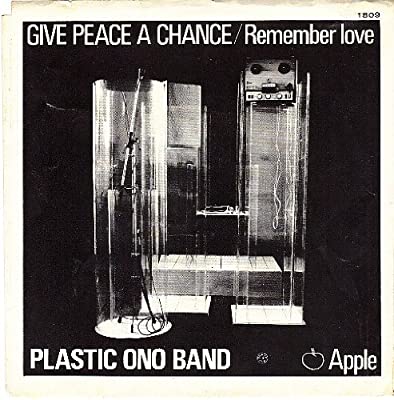 But with these events underway and everything else going on in John's life, such as his highly publicized activities with new wife Yoko Ono, he still kept this recording in the back of his mind. Simultaneous to Beatles releases of 1969, he concocted a new project as an outlet for his own music, calling it “Plastic Ono Band." The first single credited to this name was his anthem “Give Peace A Chance,” released on July 7th, 1969. Then, after he announced to his bandmates that he wanted to leave The Beatles, Lennon released the second “Plastic Ono Band” single “Cold Turkey” on October 20th, 1969. But with these events underway and everything else going on in John's life, such as his highly publicized activities with new wife Yoko Ono, he still kept this recording in the back of his mind. Simultaneous to Beatles releases of 1969, he concocted a new project as an outlet for his own music, calling it “Plastic Ono Band." The first single credited to this name was his anthem “Give Peace A Chance,” released on July 7th, 1969. Then, after he announced to his bandmates that he wanted to leave The Beatles, Lennon released the second “Plastic Ono Band” single “Cold Turkey” on October 20th, 1969.
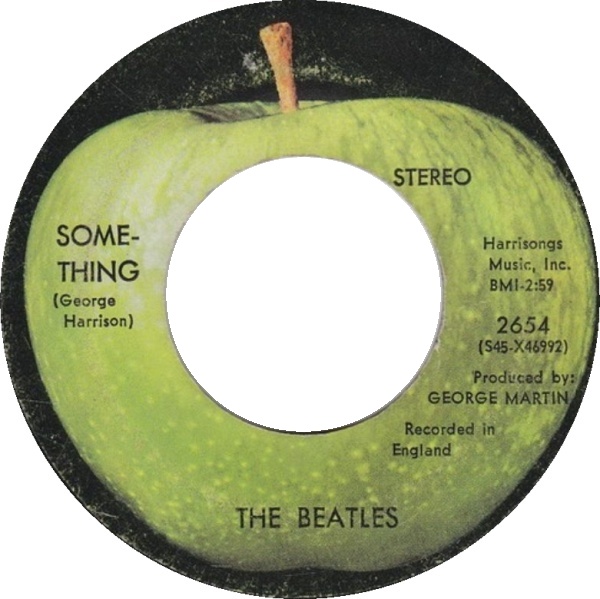 Hoping to keep his “Plastic Ono Band” project in full swing, he devised a plan to use two unreleased Beatles tracks for a new single. Apple Records announced in a press release that this new single would feature John and Yoko accompanied by “many of the greatest show business names of today,” the press rightfully interpreting this to mean this was actually a Beatles release of some sort. This single was a pairing of “You Know My Name (Look Up The Number)” as the a-side and a leftover “White Album” track from 1968 entitled “What's The New Mary Jane” as the b-side. A catalog number “APPLES 1002” was designated for the single in Britain, showing that this endeavor progressed well beyond the planning stage. It was scheduled to be released on December 5th, 1969, the same week that The Beatles' “Come Together / Something” record was at #1 in the US. Hoping to keep his “Plastic Ono Band” project in full swing, he devised a plan to use two unreleased Beatles tracks for a new single. Apple Records announced in a press release that this new single would feature John and Yoko accompanied by “many of the greatest show business names of today,” the press rightfully interpreting this to mean this was actually a Beatles release of some sort. This single was a pairing of “You Know My Name (Look Up The Number)” as the a-side and a leftover “White Album” track from 1968 entitled “What's The New Mary Jane” as the b-side. A catalog number “APPLES 1002” was designated for the single in Britain, showing that this endeavor progressed well beyond the planning stage. It was scheduled to be released on December 5th, 1969, the same week that The Beatles' “Come Together / Something” record was at #1 in the US.
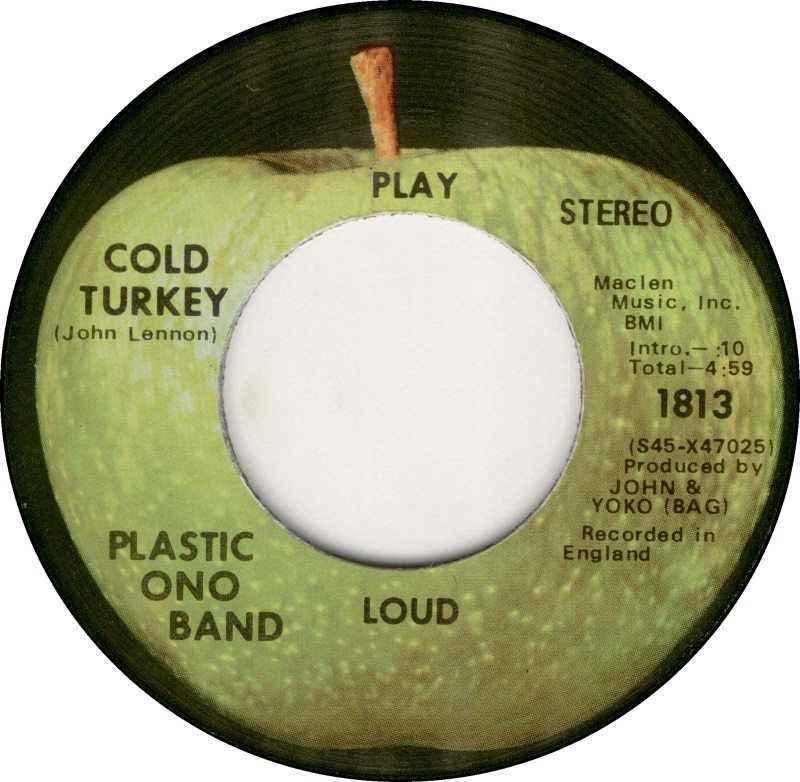 In preperation for this proposed new “Plastic Ono Band” single, John met with engineers Geoff Emerick, Mike Sheady and Nick Webb in EMI Studio Two on November 26th, 1969 to ready these songs for release. Although the tape box designates both Geoff Emerick and John Lennon as producers, it's clear who was actually in charge on that day. The session began in the control room at 7 pm, the first order of business being to make a tape copy of the 6:08 mono mix of “You Know My Name (Look Up The Number)” from April 30th, 1969, which was now called “remix mono 4.” Interestingly, only mono mixes of the song had ever been made up to this point, so instead of going back to the master tape on this day and creating a new mix in stereo, John and Geoff Emerick opted to just stay with the mono mix to simplify things. By the second half of 1969, almost all single releases were in stereo, including his current “Cold Turkey” single, but they apparently felt that keeping this mono would suffice. In preperation for this proposed new “Plastic Ono Band” single, John met with engineers Geoff Emerick, Mike Sheady and Nick Webb in EMI Studio Two on November 26th, 1969 to ready these songs for release. Although the tape box designates both Geoff Emerick and John Lennon as producers, it's clear who was actually in charge on that day. The session began in the control room at 7 pm, the first order of business being to make a tape copy of the 6:08 mono mix of “You Know My Name (Look Up The Number)” from April 30th, 1969, which was now called “remix mono 4.” Interestingly, only mono mixes of the song had ever been made up to this point, so instead of going back to the master tape on this day and creating a new mix in stereo, John and Geoff Emerick opted to just stay with the mono mix to simplify things. By the second half of 1969, almost all single releases were in stereo, including his current “Cold Turkey” single, but they apparently felt that keeping this mono would suffice.
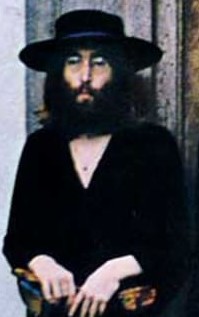 After the tape copy of “You Know My Name (Look Up The Number)” was complete, they took to editing the song to a length more suitable for radio airplay. The rock 'n' roll “Part 1” of the song was shortened and edited directly onto the lounge-sounding "Part 3," omitting the ska-sounding “Part 2” altogether. After “Part 3” concludes, the Goons-like “Part 4” is edited on after omitting a brief portion of its opening measures. This then goes directly into the full English-statesman “Part 5,” the result cutting the song down to 4:20. After this was out of the way, they began some more extensive work on “What's The New Mary Jane,” adding overdubs, stereo mixing, and then editing the song to become the b-side of the single. At 3 am the next morning, the session was complete, having prepared both sides of the next “Plastic Ono Band” single. After the tape copy of “You Know My Name (Look Up The Number)” was complete, they took to editing the song to a length more suitable for radio airplay. The rock 'n' roll “Part 1” of the song was shortened and edited directly onto the lounge-sounding "Part 3," omitting the ska-sounding “Part 2” altogether. After “Part 3” concludes, the Goons-like “Part 4” is edited on after omitting a brief portion of its opening measures. This then goes directly into the full English-statesman “Part 5,” the result cutting the song down to 4:20. After this was out of the way, they began some more extensive work on “What's The New Mary Jane,” adding overdubs, stereo mixing, and then editing the song to become the b-side of the single. At 3 am the next morning, the session was complete, having prepared both sides of the next “Plastic Ono Band” single.
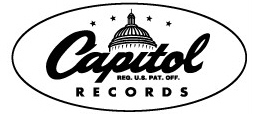 History shows, however, this was not to be. There are at least two possible reasons why this single was never released, the first being that the other Beatles objected to these tracks being designated as a “Plastic Ono Band” record. A second and more plausible reason might have been that both of these songs were registered as “Lennon / McCartney” compositions and featured Beatles other than John on them. Since an arrangement was made so that Beatles singles would be released with the Apple label on them even though the group was licensed through the parent company EMI, Capitol Records being the EMI distributor for Beatles releases in America, their singles would be issued with a Capitol catalog number. Since John had just announced his desire to sever ties with The Beatles, he undoubtedly didn't want the artist to be listed as “The Beatles” on this single, nor did he want the hassle of dealing with EMI over distribution issues. In any event, even though the mother plates were already made for pressing this single and test pressings were made, this release was put “on hold” as of December 1st, 1969 and remained that way. History shows, however, this was not to be. There are at least two possible reasons why this single was never released, the first being that the other Beatles objected to these tracks being designated as a “Plastic Ono Band” record. A second and more plausible reason might have been that both of these songs were registered as “Lennon / McCartney” compositions and featured Beatles other than John on them. Since an arrangement was made so that Beatles singles would be released with the Apple label on them even though the group was licensed through the parent company EMI, Capitol Records being the EMI distributor for Beatles releases in America, their singles would be issued with a Capitol catalog number. Since John had just announced his desire to sever ties with The Beatles, he undoubtedly didn't want the artist to be listed as “The Beatles” on this single, nor did he want the hassle of dealing with EMI over distribution issues. In any event, even though the mother plates were already made for pressing this single and test pressings were made, this release was put “on hold” as of December 1st, 1969 and remained that way.
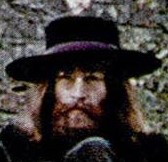 However, John was going to get “You Know My Name (Look Up The Number)” released one way or the other. If EMI was insisting that it be issued as a Beatles track and not under the “Plastic Ono Band” name, as was most likely the case, John found a way to do so. On March 6th, 1970, the song “Let It Be” was finally released as a single in preparation for the movie and soundtrack album of the same name that was due to debut in May of that year. However, John was going to get “You Know My Name (Look Up The Number)” released one way or the other. If EMI was insisting that it be issued as a Beatles track and not under the “Plastic Ono Band” name, as was most likely the case, John found a way to do so. On March 6th, 1970, the song “Let It Be” was finally released as a single in preparation for the movie and soundtrack album of the same name that was due to debut in May of that year.
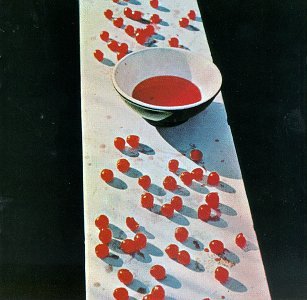 Paul was more concerned with his soon-to-be-released solo album “McCartney” than with having any input regarding this single, but John put his two cents in to insist that “You Know My Name (Look Up The Number)” became its b-side. After all, the mother plates to be used for pressing the single in Britain was already in existence so it was cost effective to use it for a b-side to the “Let It Be” single. In fact, early pressings of the British single contain the “APPLES 1002-A” matrix (though crossed out) pressed into the run-out groove. This indicates that the original intention of this mono mix was as the a-side of the above mentioned “Plastic Ono Band” single. This was changed on later pressings of the British 45. Paul was more concerned with his soon-to-be-released solo album “McCartney” than with having any input regarding this single, but John put his two cents in to insist that “You Know My Name (Look Up The Number)” became its b-side. After all, the mother plates to be used for pressing the single in Britain was already in existence so it was cost effective to use it for a b-side to the “Let It Be” single. In fact, early pressings of the British single contain the “APPLES 1002-A” matrix (though crossed out) pressed into the run-out groove. This indicates that the original intention of this mono mix was as the a-side of the above mentioned “Plastic Ono Band” single. This was changed on later pressings of the British 45.
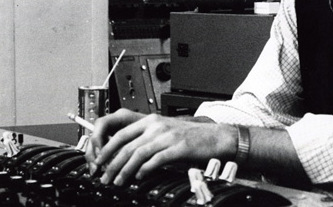 Sometime in 1995, George Martin and Geoff Emerick pulled out the master tape of “You Know My Name (Look Up The Number)” to create a stereo mix of the song to be included on the compilation album “Anthology 2.” Although the vocal overdubs weren't recorded until April 30th, 1969, the majority of the song was recorded in 1967 between their “Sgt. Pepper” and “Magical Mystery Tour” projects. Therefore, this newly created mix was positioned chronologically within that time period on the album. Sometime in 1995, George Martin and Geoff Emerick pulled out the master tape of “You Know My Name (Look Up The Number)” to create a stereo mix of the song to be included on the compilation album “Anthology 2.” Although the vocal overdubs weren't recorded until April 30th, 1969, the majority of the song was recorded in 1967 between their “Sgt. Pepper” and “Magical Mystery Tour” projects. Therefore, this newly created mix was positioned chronologically within that time period on the album.
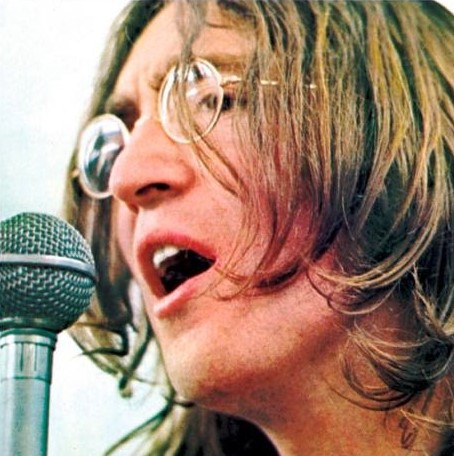 While they had the full 6:08 length at their disposal, they unfortunately decided not to present the song in its entirity despite the self-congratulatory liner notes saying: "Here it is...at almost six minutes, in extended form for the first time, including never-before-heard sections cut out by John and newly restored." In reality, while they did include all of parts 1, 2 and 3 (“Part 2” never being released before), they edited out some of "Part 4" and faded out “Part 5” too soon. Of interest here, however, is the inclusion of more "master of ceremonies" banter from John heard in the background during "Part 3." While they had the full 6:08 length at their disposal, they unfortunately decided not to present the song in its entirity despite the self-congratulatory liner notes saying: "Here it is...at almost six minutes, in extended form for the first time, including never-before-heard sections cut out by John and newly restored." In reality, while they did include all of parts 1, 2 and 3 (“Part 2” never being released before), they edited out some of "Part 4" and faded out “Part 5” too soon. Of interest here, however, is the inclusion of more "master of ceremonies" banter from John heard in the background during "Part 3."
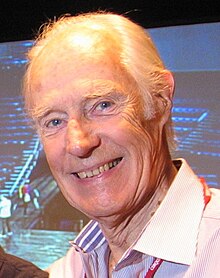 It appears that George Martin and Geoff Emerick didn't think Beatles' fans would be interested to hear this track as originally intended and cut it short for our sakes, possibly not being acquainted with what was actually released back in 1970. Personally, I think this was a huge blunder on their part, most fans of the song being very entertained by the Lennon / McCartney humor from the original single and desiring to hear more. At least this was in stereo for the first time and, with a little ingenuity, true Beatles fans would now be able to piece something together on their own to hear how John and Paul originally envisioned the song. These fan edits can be heard in bootlegs and online to this day. It appears that George Martin and Geoff Emerick didn't think Beatles' fans would be interested to hear this track as originally intended and cut it short for our sakes, possibly not being acquainted with what was actually released back in 1970. Personally, I think this was a huge blunder on their part, most fans of the song being very entertained by the Lennon / McCartney humor from the original single and desiring to hear more. At least this was in stereo for the first time and, with a little ingenuity, true Beatles fans would now be able to piece something together on their own to hear how John and Paul originally envisioned the song. These fan edits can be heard in bootlegs and online to this day.
Song Structure and Style
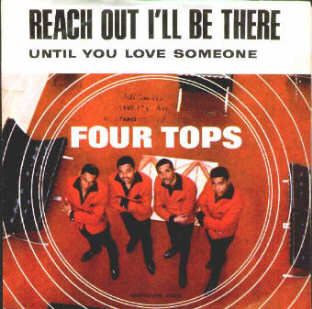 This unique Beatles song consists entirely of verses performed in four different musical styles. (The actual recording was done in five styles but, since the second style was omited entirely from the officially released version, only four styles will be reviewed here.) As it turned out, there are seven repeated verses; the first in a 4/4 “rock” style, three more in a “lounge lizard” style, one in a “Goons swing” style, and two final verses in what I'll call a “Sinatra swing” style. This brings the total verses to seven, all of these being eleven measures in length with a chord pattern reminiscent, at least in John's mind, of The Four Tops. This results in a 'verse/ verse/ verse/ verse/ verse/ verse/ verse' format (or aaaaaaa). However, there are various introductory and concluding measures sprinkled through the arrangement of the song. These will be outlined below. This unique Beatles song consists entirely of verses performed in four different musical styles. (The actual recording was done in five styles but, since the second style was omited entirely from the officially released version, only four styles will be reviewed here.) As it turned out, there are seven repeated verses; the first in a 4/4 “rock” style, three more in a “lounge lizard” style, one in a “Goons swing” style, and two final verses in what I'll call a “Sinatra swing” style. This brings the total verses to seven, all of these being eleven measures in length with a chord pattern reminiscent, at least in John's mind, of The Four Tops. This results in a 'verse/ verse/ verse/ verse/ verse/ verse/ verse' format (or aaaaaaa). However, there are various introductory and concluding measures sprinkled through the arrangement of the song. These will be outlined below.
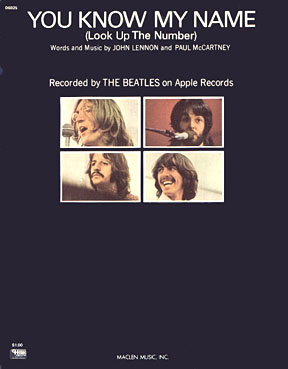 The song begins with a six-measure introduction to a "rock" style verse, these introductory six measures being what we'll later recognize as the closing measures of a standard verse. The first two of these introductory measures feature Ringo's drums with the snare only on the two-beats with handclaps layered on top each time. Also heard in these measures are John's piano chords on the downbeat of each measure and Paul's bass starting off with a low note and then proceeding to play repeated notes high up on the neck. The song begins with a six-measure introduction to a "rock" style verse, these introductory six measures being what we'll later recognize as the closing measures of a standard verse. The first two of these introductory measures feature Ringo's drums with the snare only on the two-beats with handclaps layered on top each time. Also heard in these measures are John's piano chords on the downbeat of each measure and Paul's bass starting off with a low note and then proceeding to play repeated notes high up on the neck.
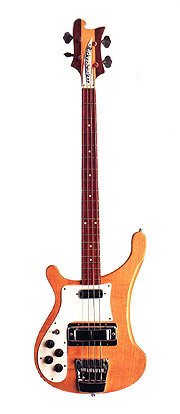 Four more introductory measures are then heard, these being what is usually the final four measures of the song's standard verses. Ringo moves to a regular 4/4 drum beat with handclaps and snare hits on the usual two- and four-beats, while John's piano and Paul's bass move through the chord changes. The guitar parts that are said to be present in the rhythm track are so low in the mix so as not to be heard at all. The first eleven-measure verse then begins with the same instrumentation throughout, the only addition being John's abrasive lead vocal and Paul's aggressive higher harmony. Four more introductory measures are then heard, these being what is usually the final four measures of the song's standard verses. Ringo moves to a regular 4/4 drum beat with handclaps and snare hits on the usual two- and four-beats, while John's piano and Paul's bass move through the chord changes. The guitar parts that are said to be present in the rhythm track are so low in the mix so as not to be heard at all. The first eleven-measure verse then begins with the same instrumentation throughout, the only addition being John's abrasive lead vocal and Paul's aggressive higher harmony.
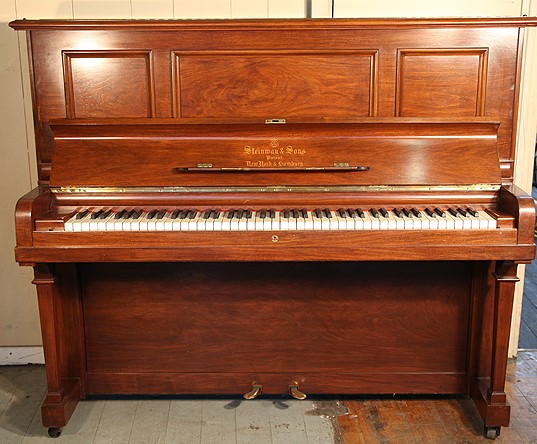 Next comes the second “lounge lizard” style section of the song, which consists of three full verses. Before these begin, however, eight introductory measures are heard, the first beginning with a crashed chord on piano, guitar and drums and Ringo switching to bongos while maracas and percussion appear throughout the next three measures. John welcomes the lounge act to the stage in measure three by announcing, “Good evening, and welcome to 'Slaggers.'” He continues in measure four with “...featuring 'Denis O'Bell,” while Paul's piano ushers in the next four introductory measures. These four measures are a close facsimile to the final last measures of each standard verse but are here used as a means for John to welcome the singer to the stage. In acknowledgment of the proficient performance of the bongo player, John states, “Ah Ringo, Ringo, let's hear it for Denn-o, Ha, Ho!” Denis O'Bell (or Paul) twice addresses the crowd with a subtle “Good evening.” Next comes the second “lounge lizard” style section of the song, which consists of three full verses. Before these begin, however, eight introductory measures are heard, the first beginning with a crashed chord on piano, guitar and drums and Ringo switching to bongos while maracas and percussion appear throughout the next three measures. John welcomes the lounge act to the stage in measure three by announcing, “Good evening, and welcome to 'Slaggers.'” He continues in measure four with “...featuring 'Denis O'Bell,” while Paul's piano ushers in the next four introductory measures. These four measures are a close facsimile to the final last measures of each standard verse but are here used as a means for John to welcome the singer to the stage. In acknowledgment of the proficient performance of the bongo player, John states, “Ah Ringo, Ringo, let's hear it for Denn-o, Ha, Ho!” Denis O'Bell (or Paul) twice addresses the crowd with a subtle “Good evening.”
 Then the first of three verses begins, the instrumentation being the same for all three, this being Paul on piano, Ringo on bongos and assorted percussion throughout. Paul's subdued but bass-heavy lead vocal appears throughout while John's witty announcer quips are peppered here and there. After Paul sings his first line “You know my name...” in the first measure, a splash of polite applause from the imagined small audience is heard in measure two. Then the first of three verses begins, the instrumentation being the same for all three, this being Paul on piano, Ringo on bongos and assorted percussion throughout. Paul's subdued but bass-heavy lead vocal appears throughout while John's witty announcer quips are peppered here and there. After Paul sings his first line “You know my name...” in the first measure, a splash of polite applause from the imagined small audience is heard in measure two.
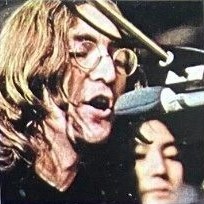 All three successive verses in this section continue this humorous pattern, one interesting point being during the seventh measure of the second verse where the piano, bongos and cowbell play a “cha-cha-cha” pattern and then stop. After all of the added “Bah-bah-bah-bum” and “That's right” vocalizations from Paul, his cheeky play on words “you KNOW you know my name” which makes him audibly chuckle, and the “Hey!” and “Yahoo!” exclamations from John, five extra concluding measures round out this section of the song. The instruments repeat the final chord pattern during the first four of these concluding measures but then fade away entirely for the final measure. The last two measures have John once again addressing the small crowd to encourage appreciation for the lounge singer. He states loudly, “Oh, let's hear it! Come on, Denis! Let's hear it for Denis O'Bell!” All three successive verses in this section continue this humorous pattern, one interesting point being during the seventh measure of the second verse where the piano, bongos and cowbell play a “cha-cha-cha” pattern and then stop. After all of the added “Bah-bah-bah-bum” and “That's right” vocalizations from Paul, his cheeky play on words “you KNOW you know my name” which makes him audibly chuckle, and the “Hey!” and “Yahoo!” exclamations from John, five extra concluding measures round out this section of the song. The instruments repeat the final chord pattern during the first four of these concluding measures but then fade away entirely for the final measure. The last two measures have John once again addressing the small crowd to encourage appreciation for the lounge singer. He states loudly, “Oh, let's hear it! Come on, Denis! Let's hear it for Denis O'Bell!”
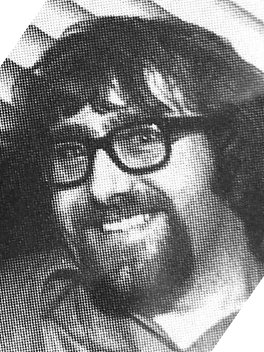 Just before this fifth added measure ends, we witness an abrupt edit into the third “Goons swing” section of the song, the final beat of this measure being filled with a mumbled “mim-min” from Paul. We then hear four introductory measures which, once again, mimic the final four measures of their usual verse pattern. The instrumentation throughout the single verse that follows consists once again of Paul on piano and Ringo on bongos, but this time features a different assortment of percussive elements such as a bird whistle, Mal Evans shoveling gravel, and what sounds like a squeaking rubber duck. Just before this fifth added measure ends, we witness an abrupt edit into the third “Goons swing” section of the song, the final beat of this measure being filled with a mumbled “mim-min” from Paul. We then hear four introductory measures which, once again, mimic the final four measures of their usual verse pattern. The instrumentation throughout the single verse that follows consists once again of Paul on piano and Ringo on bongos, but this time features a different assortment of percussive elements such as a bird whistle, Mal Evans shoveling gravel, and what sounds like a squeaking rubber duck.
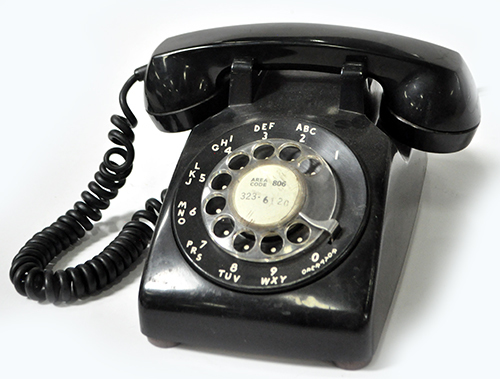 While John keeps repeating the song's title in random ways in a somewhat higher registered voice, Paul keeps mumbling and making assorted sounds, such as a vocalization of a rotary phone being dialed in measures one and two. Starting in measure eight, while John keeps reciting the title of the song in the background, Paul begins the silly recitation, “you know my name / you know me number two / you know me number three / you know me number four...” and so on into the eight additional measures that finish out this verse. In the third and fourth of these extra measures, Paul concludes his recitation with, “you know me name, you know me number, what's up with you!” before he cracks himself up. While John keeps repeating the song's title in random ways in a somewhat higher registered voice, Paul keeps mumbling and making assorted sounds, such as a vocalization of a rotary phone being dialed in measures one and two. Starting in measure eight, while John keeps reciting the title of the song in the background, Paul begins the silly recitation, “you know my name / you know me number two / you know me number three / you know me number four...” and so on into the eight additional measures that finish out this verse. In the third and fourth of these extra measures, Paul concludes his recitation with, “you know me name, you know me number, what's up with you!” before he cracks himself up.
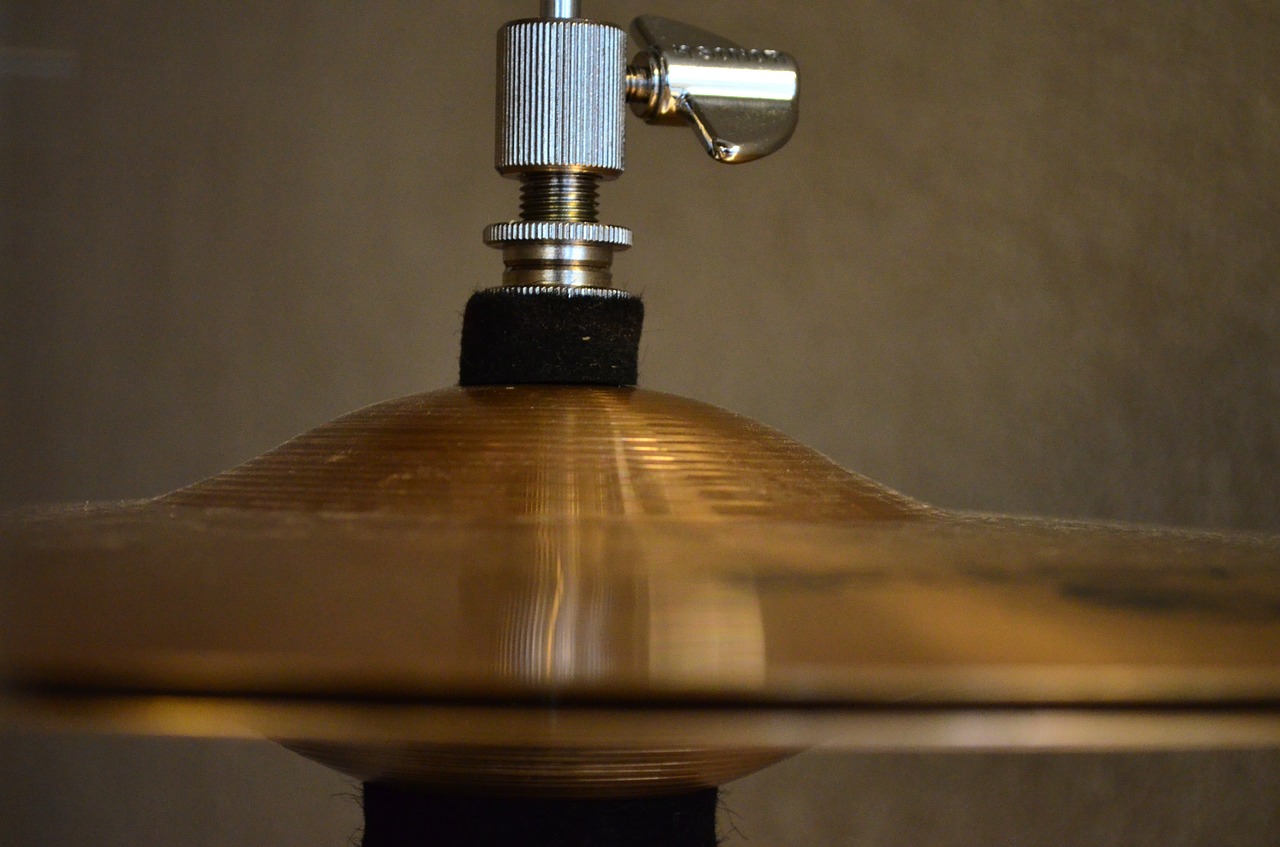 The final four extra measures of this section act as a fluid transistion into a final “Sinatra swing” section of the song, this consisting of two full verses. Paul's staccato piano playing in the final two measures of the previous section ushers in four introductory measures to the final section, the instrumentation for the rest of the song comprising Paul on piano, John presumably on bass, and Ringo back on a full drum kit playing a stereotypical stripper-like hi-hat pattern. The most noteworthy element of both of these final verses is John's “English statesman” garbled vocal work, Paul interjecting some mumblings himself from time to time. The final four extra measures of this section act as a fluid transistion into a final “Sinatra swing” section of the song, this consisting of two full verses. Paul's staccato piano playing in the final two measures of the previous section ushers in four introductory measures to the final section, the instrumentation for the rest of the song comprising Paul on piano, John presumably on bass, and Ringo back on a full drum kit playing a stereotypical stripper-like hi-hat pattern. The most noteworthy element of both of these final verses is John's “English statesman” garbled vocal work, Paul interjecting some mumblings himself from time to time.
 This hilarious conclusion to the track is added to in the seventh measure of the last verse by George's vibraphone playing which continues through the four extra measures at the end of the verse that conclude the backing track of the song. The eighth measure of the final verse also brings in Brian Jones' saxophone solo with both Paul and John continuing their indecipherable mutterings in the background. As the song comes to a big finish, Paul can be heard singing “That's all!” followed by John saying “How 'bout that!” and continuing his nonsensical sounds after the backing track has faded away. John Lennon then concludes the proceedings with a startling “Goodbye...HAI!” This hilarious conclusion to the track is added to in the seventh measure of the last verse by George's vibraphone playing which continues through the four extra measures at the end of the verse that conclude the backing track of the song. The eighth measure of the final verse also brings in Brian Jones' saxophone solo with both Paul and John continuing their indecipherable mutterings in the background. As the song comes to a big finish, Paul can be heard singing “That's all!” followed by John saying “How 'bout that!” and continuing his nonsensical sounds after the backing track has faded away. John Lennon then concludes the proceedings with a startling “Goodbye...HAI!”
American Releases
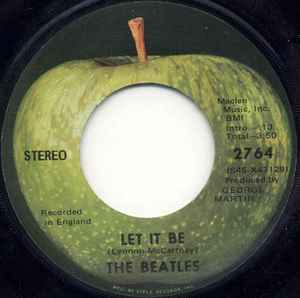 American audiences were first exposed to “You Know My Name (Look Up The Number)” on March 11th, 1970 as the b-side of the “Let It Be” single. Lennon may have been quite pleased to have the song finally available to the public, but all attention was given to the single's a-side, which quickly rose to #1 on the Billboard Hot 100 and stayed there for two weeks. Its b-side got virtually no radio exposure and remained undiscovered by most for the time being. American audiences were first exposed to “You Know My Name (Look Up The Number)” on March 11th, 1970 as the b-side of the “Let It Be” single. Lennon may have been quite pleased to have the song finally available to the public, but all attention was given to the single's a-side, which quickly rose to #1 on the Billboard Hot 100 and stayed there for two weeks. Its b-side got virtually no radio exposure and remained undiscovered by most for the time being.
.jpg) In fact, there was even some confusion regarding what the exact title of this obscure Beatles song was. The record label read “You Know My Name (Look Up My Number)” instead of “the” number, this slight mistake continuing through most of the US reissues thereafter. The picture sleeve contained the correct title, as did all of the UK pressings of the single. In fact, there was even some confusion regarding what the exact title of this obscure Beatles song was. The record label read “You Know My Name (Look Up My Number)” instead of “the” number, this slight mistake continuing through most of the US reissues thereafter. The picture sleeve contained the correct title, as did all of the UK pressings of the single.
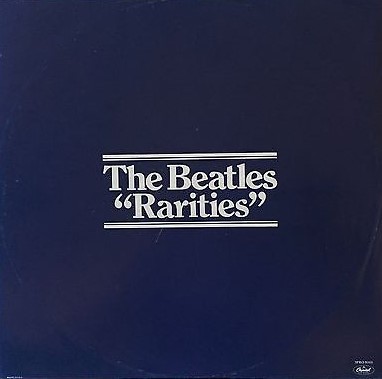 Because of EMI's decision to release a box set that included all of the British Beatles albums as well as an additional album entitled "Rarities" that included songs that did not appear on any British Beatles album, Capitol initially decided to release this album in America. 2,000 promotional copies of the album were manufactured (#SPRO-8969) and then another unlimited number of advance copies (ESN-SN-12009) were printed in the fall of 1979. "You Know My Name (Look Up The Number)" was included on this proposed album which was ultimately abondoned due to the fact that this and most of the songs contained therein were available on other Beatles albums in the US at the time. These promotional albums are very collectible today. Because of EMI's decision to release a box set that included all of the British Beatles albums as well as an additional album entitled "Rarities" that included songs that did not appear on any British Beatles album, Capitol initially decided to release this album in America. 2,000 promotional copies of the album were manufactured (#SPRO-8969) and then another unlimited number of advance copies (ESN-SN-12009) were printed in the fall of 1979. "You Know My Name (Look Up The Number)" was included on this proposed album which was ultimately abondoned due to the fact that this and most of the songs contained therein were available on other Beatles albums in the US at the time. These promotional albums are very collectible today.
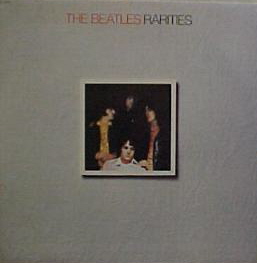 The first actual appearance of the song on a US album was the US Capitol version of “Rarities,” which was released on March 24th, 1980. The album was Capitol's answer to the British “Rarities” album that was being imported to the states in droves, this album containing Beatles' singles and EP tracks that were not contained on a British album at the time. Since Beatles album configurations were quite different in the states, a US “Rarities” album became in high demand. It reached #21 on the Billboard album chart despite not having any singles released from it at the time. The first actual appearance of the song on a US album was the US Capitol version of “Rarities,” which was released on March 24th, 1980. The album was Capitol's answer to the British “Rarities” album that was being imported to the states in droves, this album containing Beatles' singles and EP tracks that were not contained on a British album at the time. Since Beatles album configurations were quite different in the states, a US “Rarities” album became in high demand. It reached #21 on the Billboard album chart despite not having any singles released from it at the time.
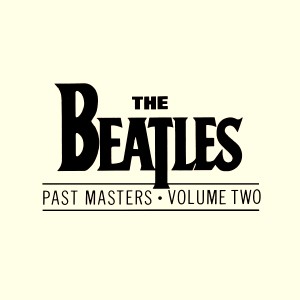 The next time “You Know My Name (Look Up The Number)” was released in the US was on “Past Masters – Volume Two,” which came out on March 7th, 1988 on CD. For the vinyl edition of this release, it was decided to combine both volumes of "Past Masters" to form a double-album, this being released on October 24th, 1988. The double-album concept was then continued for the remastered re-releases of this title, the 2-CD set coming out on September 9th, 2009 and the vinyl double-album being released on November 12th, 2012. The next time “You Know My Name (Look Up The Number)” was released in the US was on “Past Masters – Volume Two,” which came out on March 7th, 1988 on CD. For the vinyl edition of this release, it was decided to combine both volumes of "Past Masters" to form a double-album, this being released on October 24th, 1988. The double-album concept was then continued for the remastered re-releases of this title, the 2-CD set coming out on September 9th, 2009 and the vinyl double-album being released on November 12th, 2012.
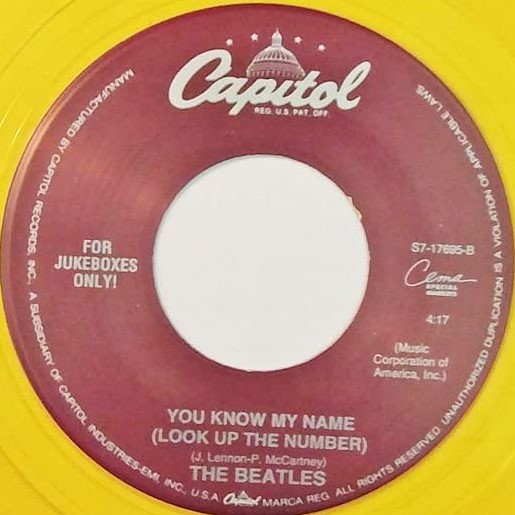 In March of 1994, the "Let It Be / You Know My Name (Look Up The Number)" single was re-released on the Capitol Cema "For Jukeboxes Only" series on yellow vinyl. This time around, Capitol finally thought to correct the song's title on the label, it reading "Look Up The Number." This has proved to be hard to find in later years In March of 1994, the "Let It Be / You Know My Name (Look Up The Number)" single was re-released on the Capitol Cema "For Jukeboxes Only" series on yellow vinyl. This time around, Capitol finally thought to correct the song's title on the label, it reading "Look Up The Number." This has proved to be hard to find in later years
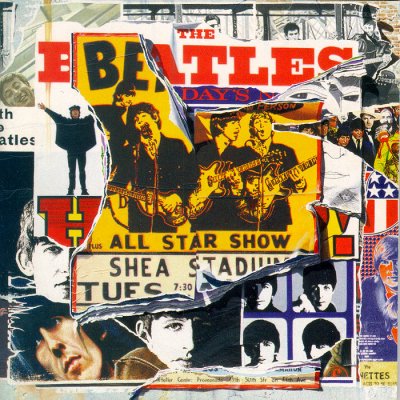 On March 18th, 1996, the aforementioned extended stereo mix of "You Know My Name (Look Up The Number)" was featured on the compilation album "Anthology 2." While it was eye-opening for many Beatles enthusiasts to hear portions of the song that weren't previously available, it was also dissapointing that other segments were either edited out or faded away too soon. On March 18th, 1996, the aforementioned extended stereo mix of "You Know My Name (Look Up The Number)" was featured on the compilation album "Anthology 2." While it was eye-opening for many Beatles enthusiasts to hear portions of the song that weren't previously available, it was also dissapointing that other segments were either edited out or faded away too soon.
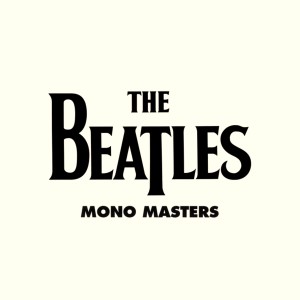 The original mono mix of the song was also included in the CD box set “The Beatles In Mono” on a new disc entitled "Mono Masters," this being released on September 9th, 2009. A vinyl edition of this box set was first released on September 9th, 2014. The original mono mix of the song was also included in the CD box set “The Beatles In Mono” on a new disc entitled "Mono Masters," this being released on September 9th, 2009. A vinyl edition of this box set was first released on September 9th, 2014.
Live Performances
Since this song was released near the time it was officially announced that The Beatles had broken up, a live performance by the group was obviously out of the question. Nor could it ever have been, due to this being a studio creation for self-indulgent comedic reasons. None of the individual Beatles would ever dare to bring this selection to any stage either, knowing that its sponaneous atmosphere could never be replicated.
Conclusion
 “There were so many of them my wife started going out of her mind,” states Denis O'Dell, former director of Apple Films, about the abundance of anonymous phone calls his home was receiving after “You Know My Name (Look Up The Number)” was released. As detailed above, John's vocal ad libs about Denis O'Bell, as heard in the song, inspired some Beatles enthusiasts to “look up” his number and give him a ring. The recent search for clues on Beatles recordings, spurred on by the preposterous claim of Paul McCartney's death that circulated in late 1969, continued on with this 1970 release. “There were so many of them my wife started going out of her mind,” states Denis O'Dell, former director of Apple Films, about the abundance of anonymous phone calls his home was receiving after “You Know My Name (Look Up The Number)” was released. As detailed above, John's vocal ad libs about Denis O'Bell, as heard in the song, inspired some Beatles enthusiasts to “look up” his number and give him a ring. The recent search for clues on Beatles recordings, spurred on by the preposterous claim of Paul McCartney's death that circulated in late 1969, continued on with this 1970 release.
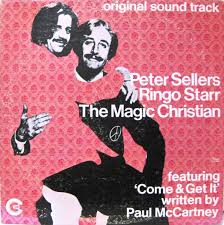 Denis O'Dell continues: “Neither of us knew why this was suddenly happening. Then I happened to be in one Sunday and picked up the phone myself. It was someone on LSD calling from a candle making factory in Philadelphia and they just kept saying, 'We know your name and now we've got your number.' It was only through talking to the person that I established what it was all about. Then Ringo, who I'd worked with on the film 'The Magic Christian,' played me the track and I realized why I'd been getting all these mysterious phone calls. It was because of this experience that I first went ex-directory. We were starting to get people turn up on the doorstep. Once there were 10 or 12 of these people who'd tracked me down and they arrived thinking they could all come and live with us! I still don't really know why they put my name in the song. I wasn't in the studio with them at the time as far as I can remember. They've never mentioned it since!” Denis O'Dell continues: “Neither of us knew why this was suddenly happening. Then I happened to be in one Sunday and picked up the phone myself. It was someone on LSD calling from a candle making factory in Philadelphia and they just kept saying, 'We know your name and now we've got your number.' It was only through talking to the person that I established what it was all about. Then Ringo, who I'd worked with on the film 'The Magic Christian,' played me the track and I realized why I'd been getting all these mysterious phone calls. It was because of this experience that I first went ex-directory. We were starting to get people turn up on the doorstep. Once there were 10 or 12 of these people who'd tracked me down and they arrived thinking they could all come and live with us! I still don't really know why they put my name in the song. I wasn't in the studio with them at the time as far as I can remember. They've never mentioned it since!”
Song Summary
“You Know My Name (Look Up The Number)”
Written by: John Lennon / Paul McCartney
- Song Written: May 17, 1967 to May 30, 1969
- Song Recorded: May 17, June 7, 8, 1967 and April 30, 1969
- First US Release Date: March 11, 1970
- US Single Release: Apple #2764 (b-side to “Let It Be”)
- First US Album Release: Capitol #SHAL-12060 “Rarities”
- British Album Release: Parlophone #PSLP-261 “Rarities”
- Highest Chart Position: n/a
- Length: 4:20
- Key: D major
- Producer: Geoff Emerick, George Martin, Chris Thomas
- Engineers: Geoff Emerick, Richard Lush, Jeff Jarratt, Nick Webb
Instrumentation (most likely):
- John Lennon - Lead and Backing Vocals, Piano (1905 Steinway Vertegrand), Rhythm Guitar (1965 Epiphone ES- 230TD), Bass (1961 Fender Bass VI), handclaps
- Paul McCartney - Lead and Backing Vocals, Rhythm Guitar (1962 Epiphone Casino ES-230TD), Piano (1905 Steinway Vertegrand), Bass (1964 Rickenbacker 4001S), handclaps
- George Harrison - Guitar (1965 Epiphone Casino ES-230TD), Vibraphone, handclaps
- Ringo Starr - Drums (1964 Ludwig Super Classic Black Oyster Pearl), bongoes, handclaps
- Brian Jones - Saxophone
- Mal Evans - Shovel with gravel
- unknown - bird whistle, harmonica, maracas, skulls, percussion
Written and compiled by Dave Rybaczewski
|
IF YOU WOULD LIKE TO MAKE A DONATION TO KEEP THIS WEBSITE UP AND RUNNING, PLEASE CLICK BELOW!
Sign Up Below for our MONTHLY BEATLES TRIVIA QUIZ!
|